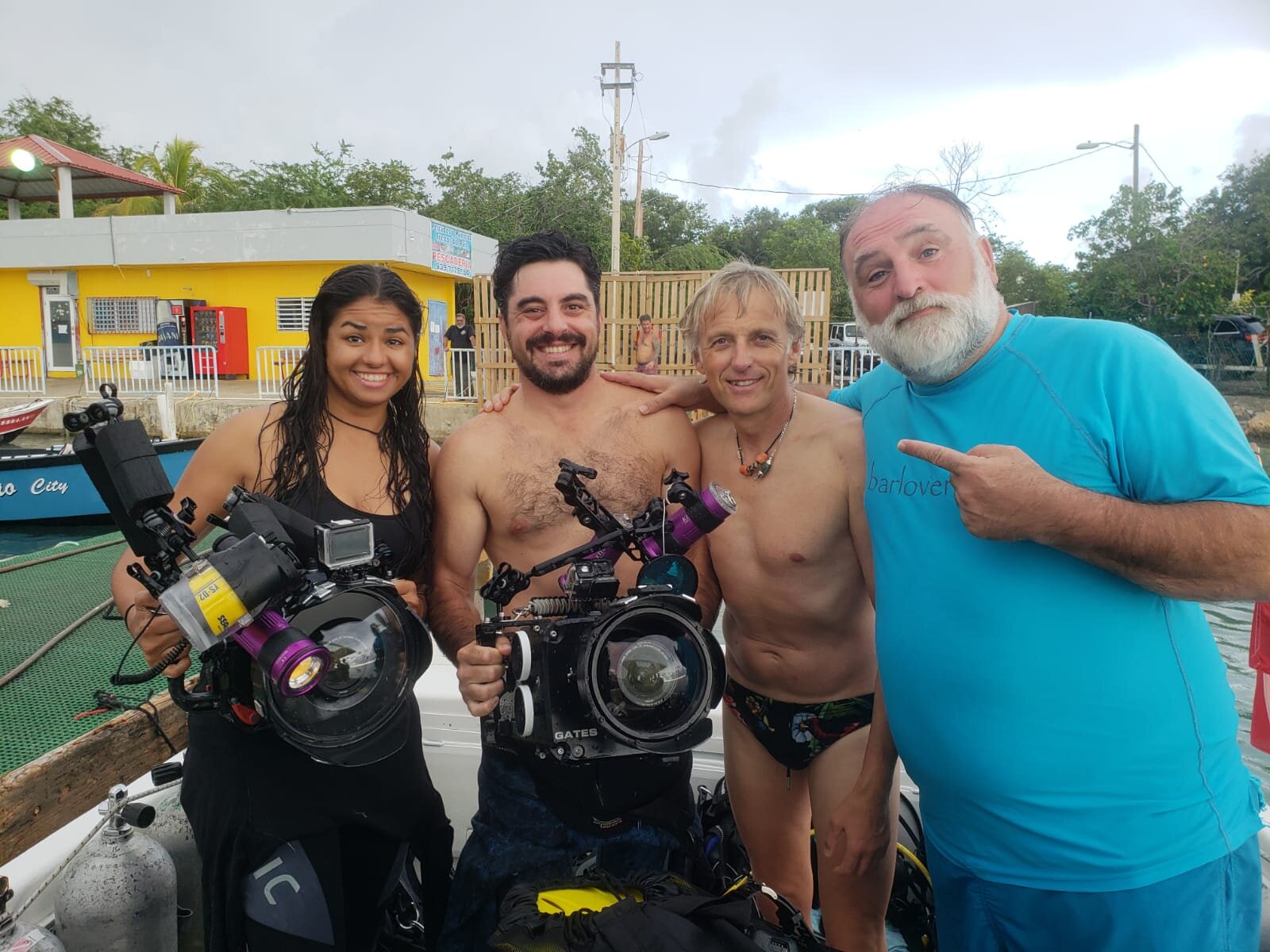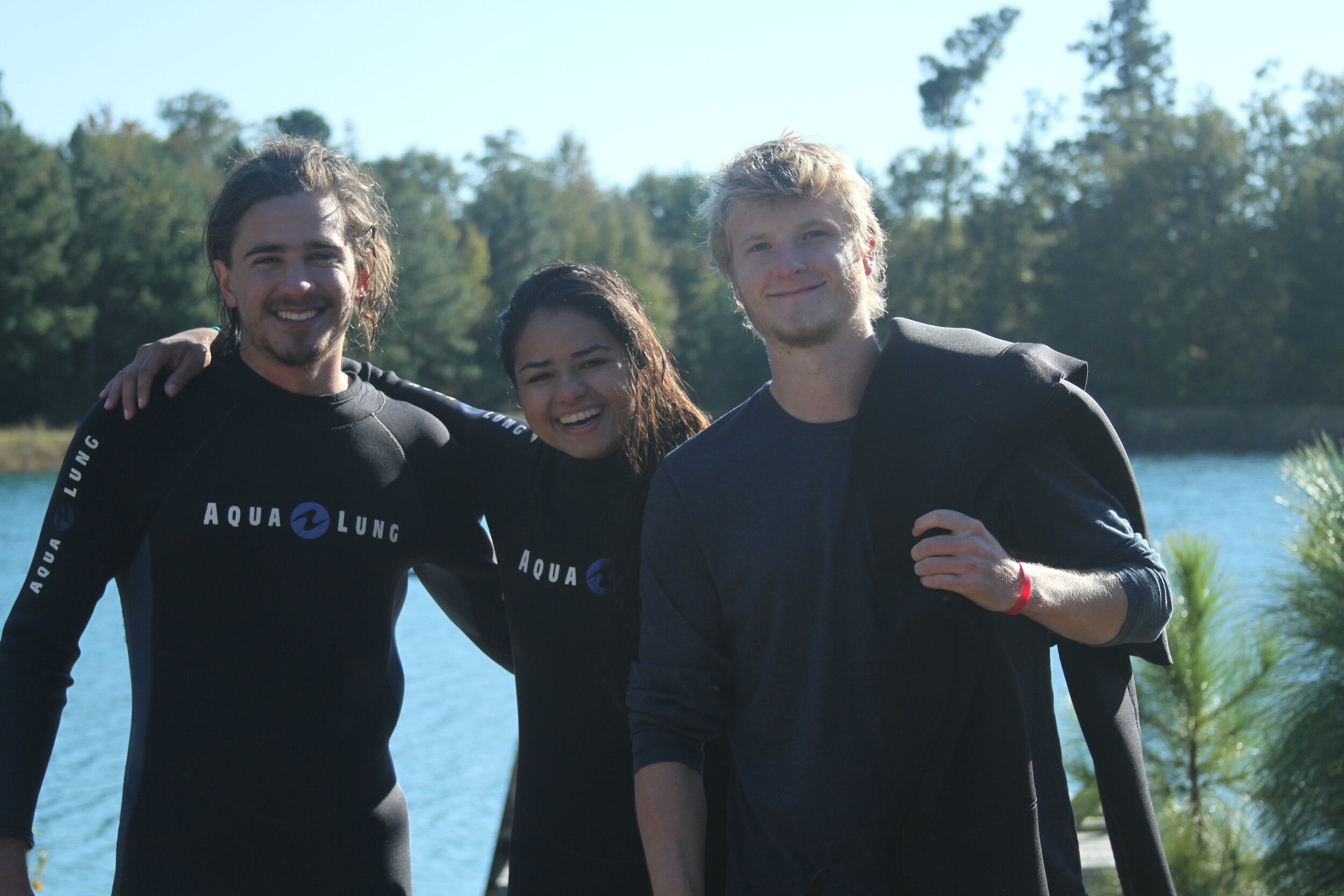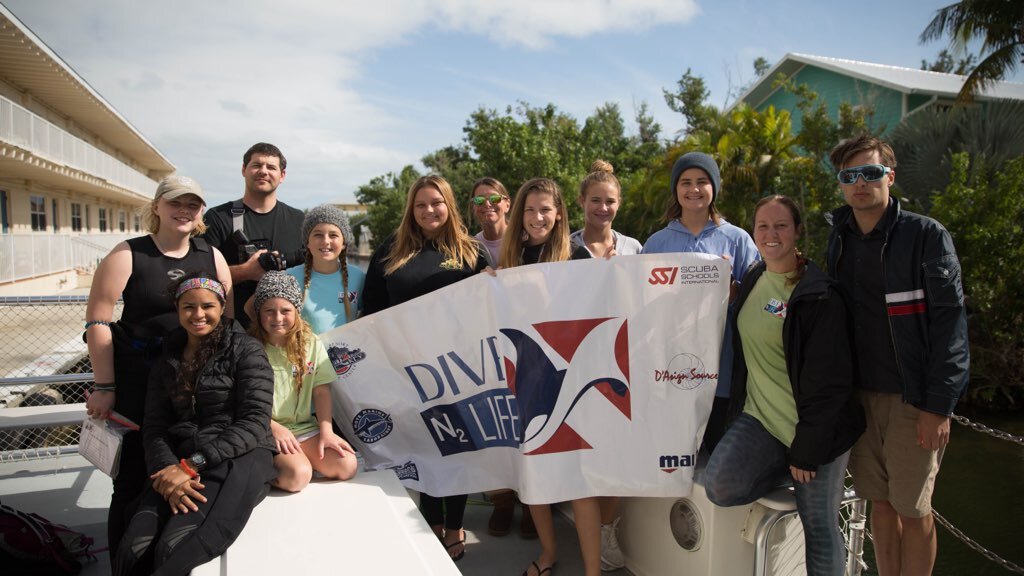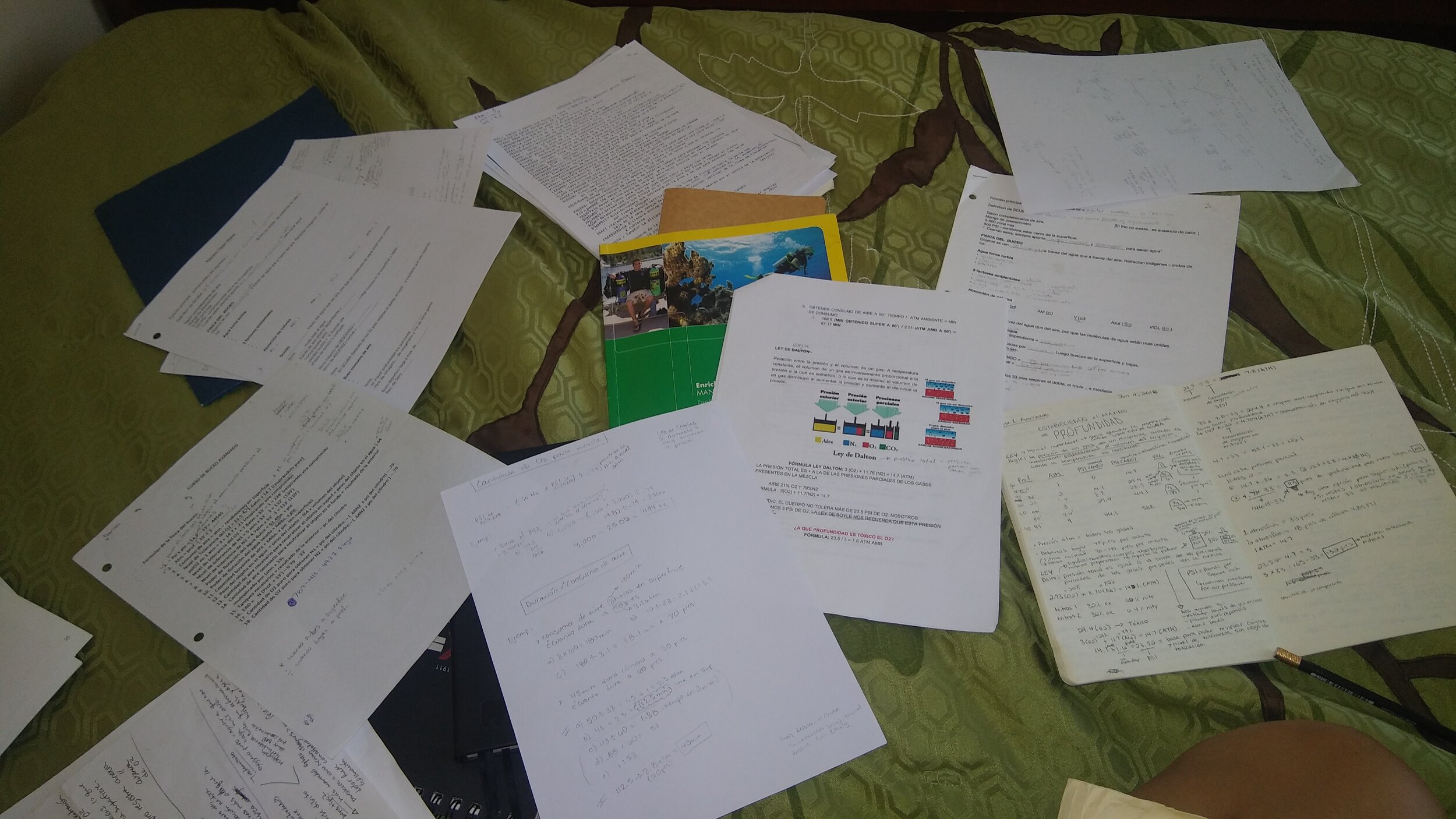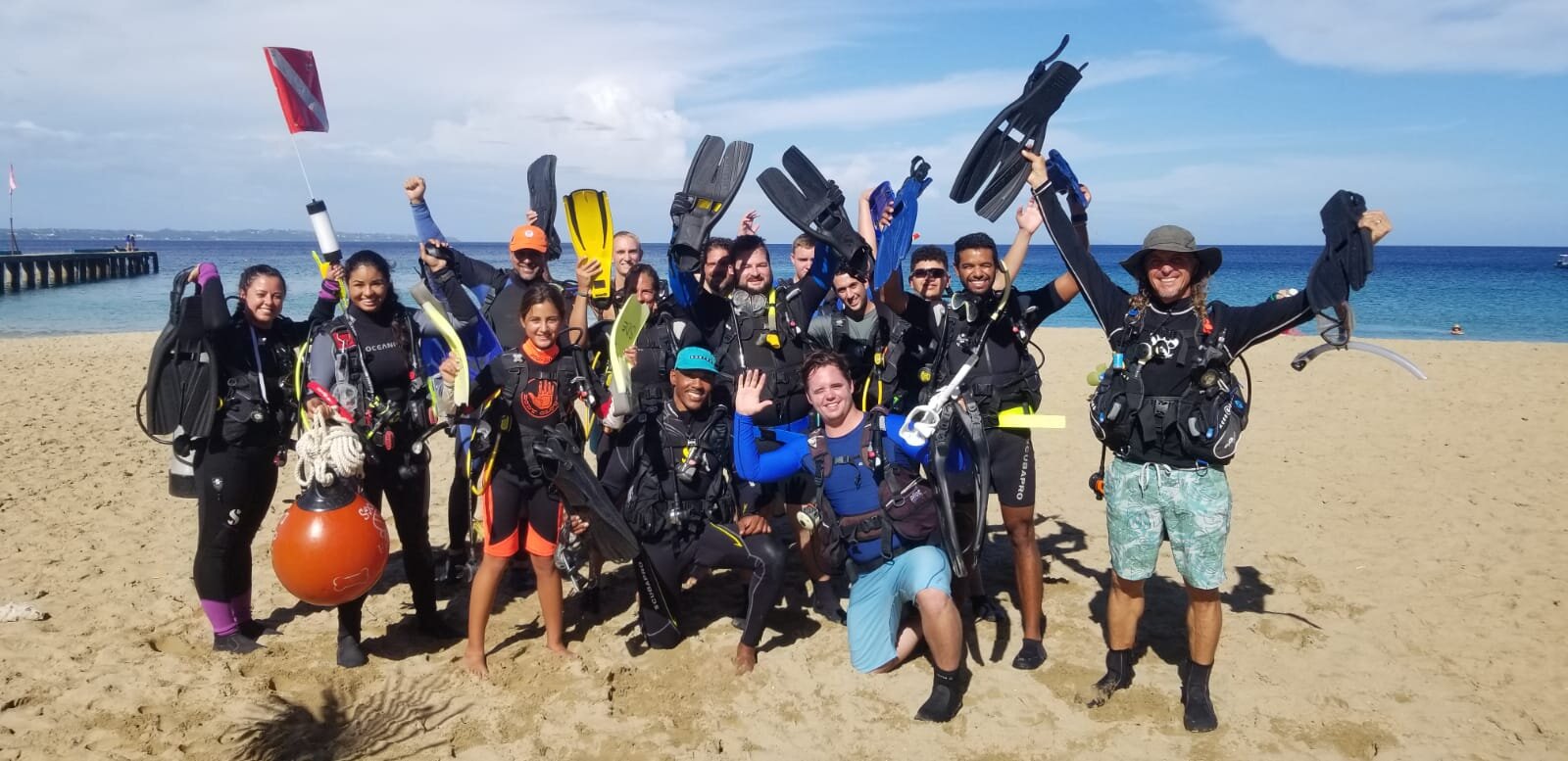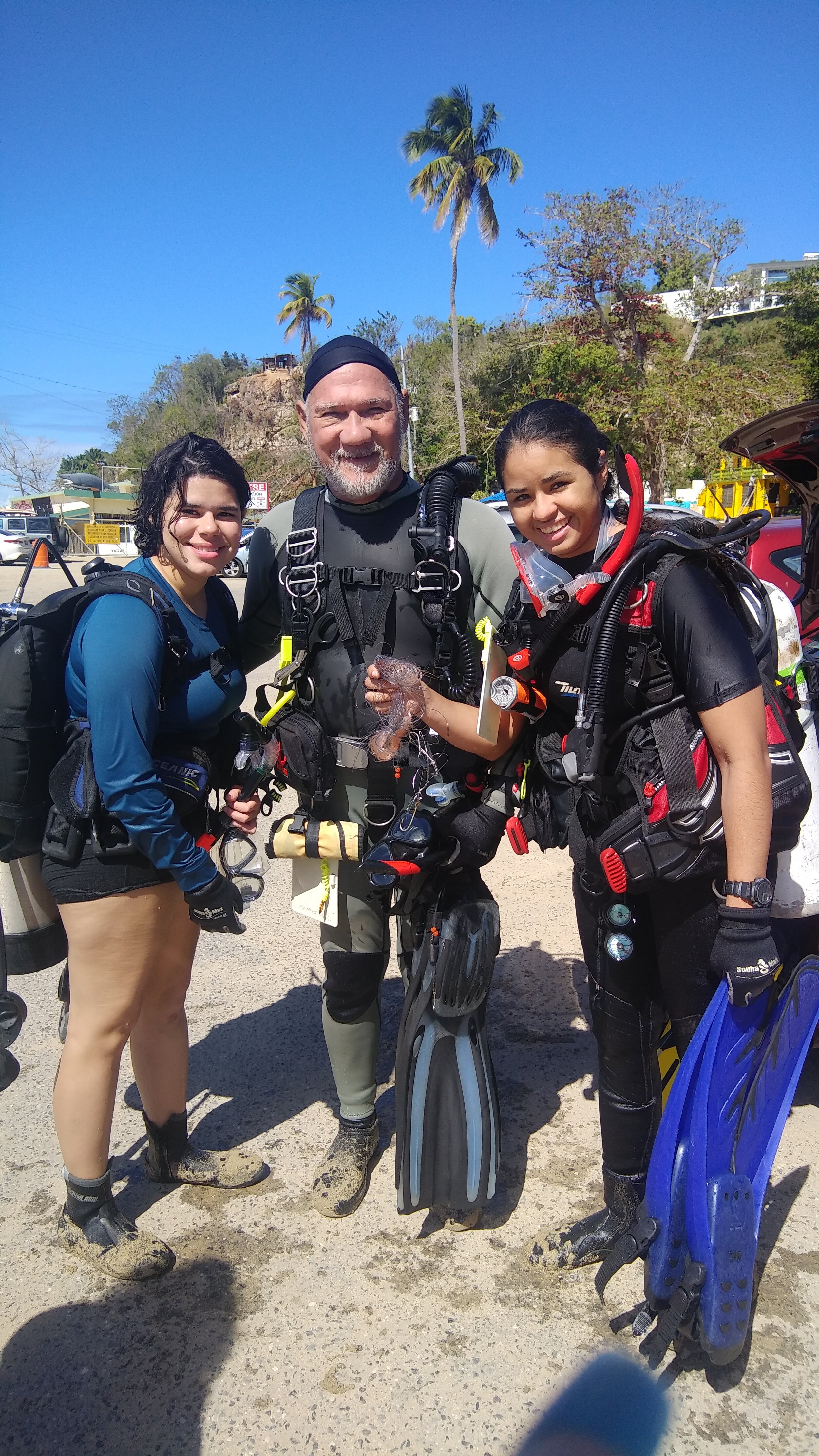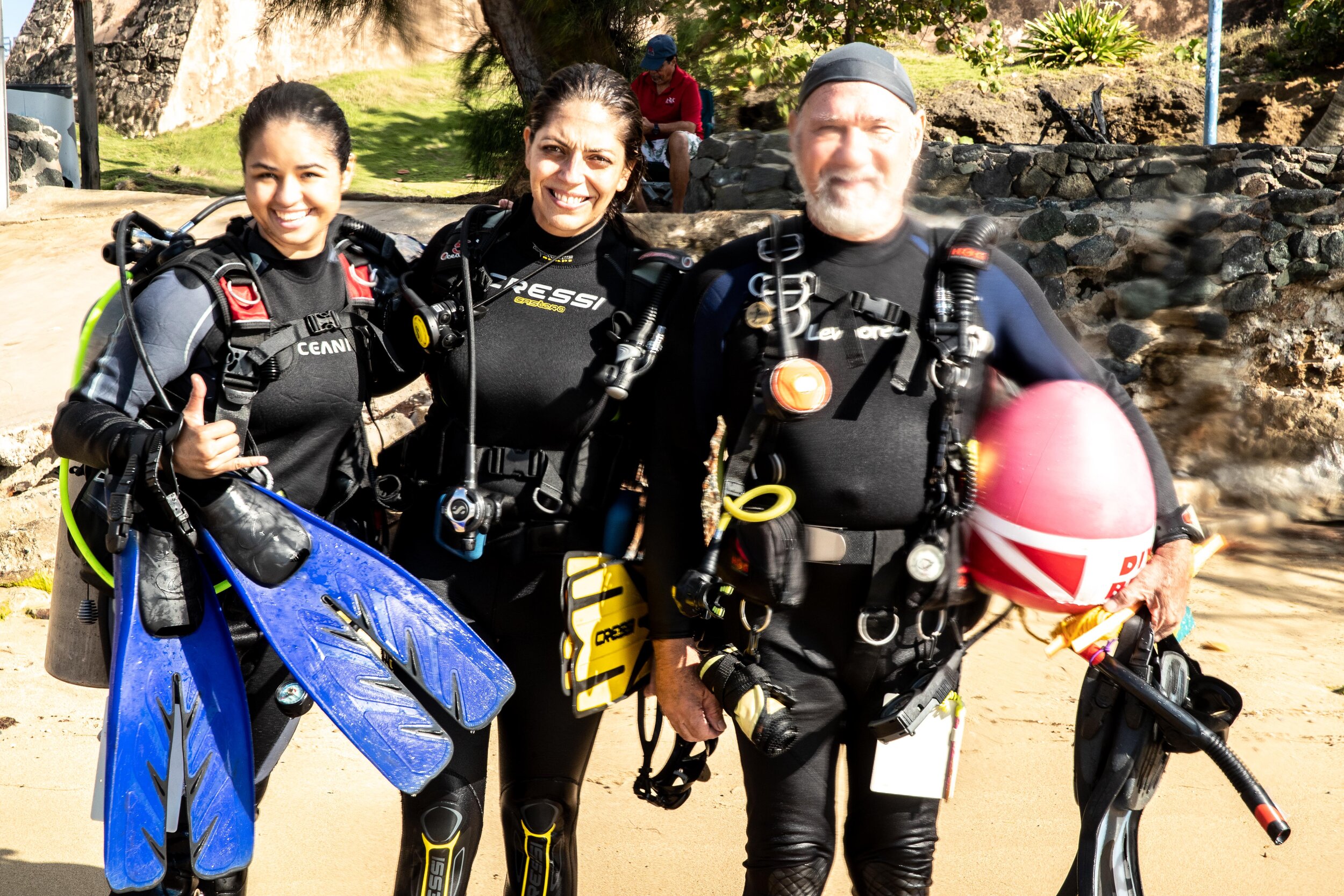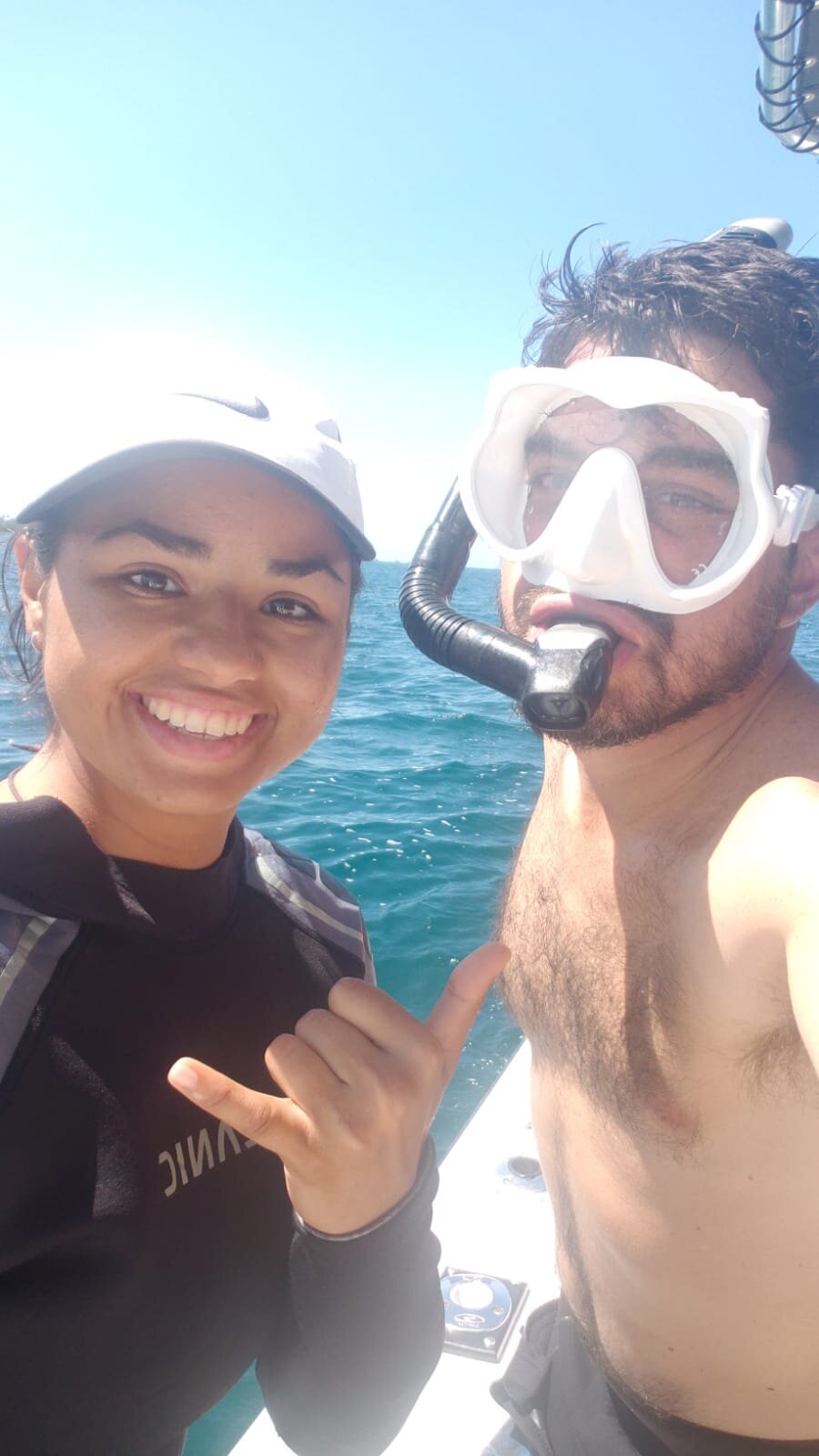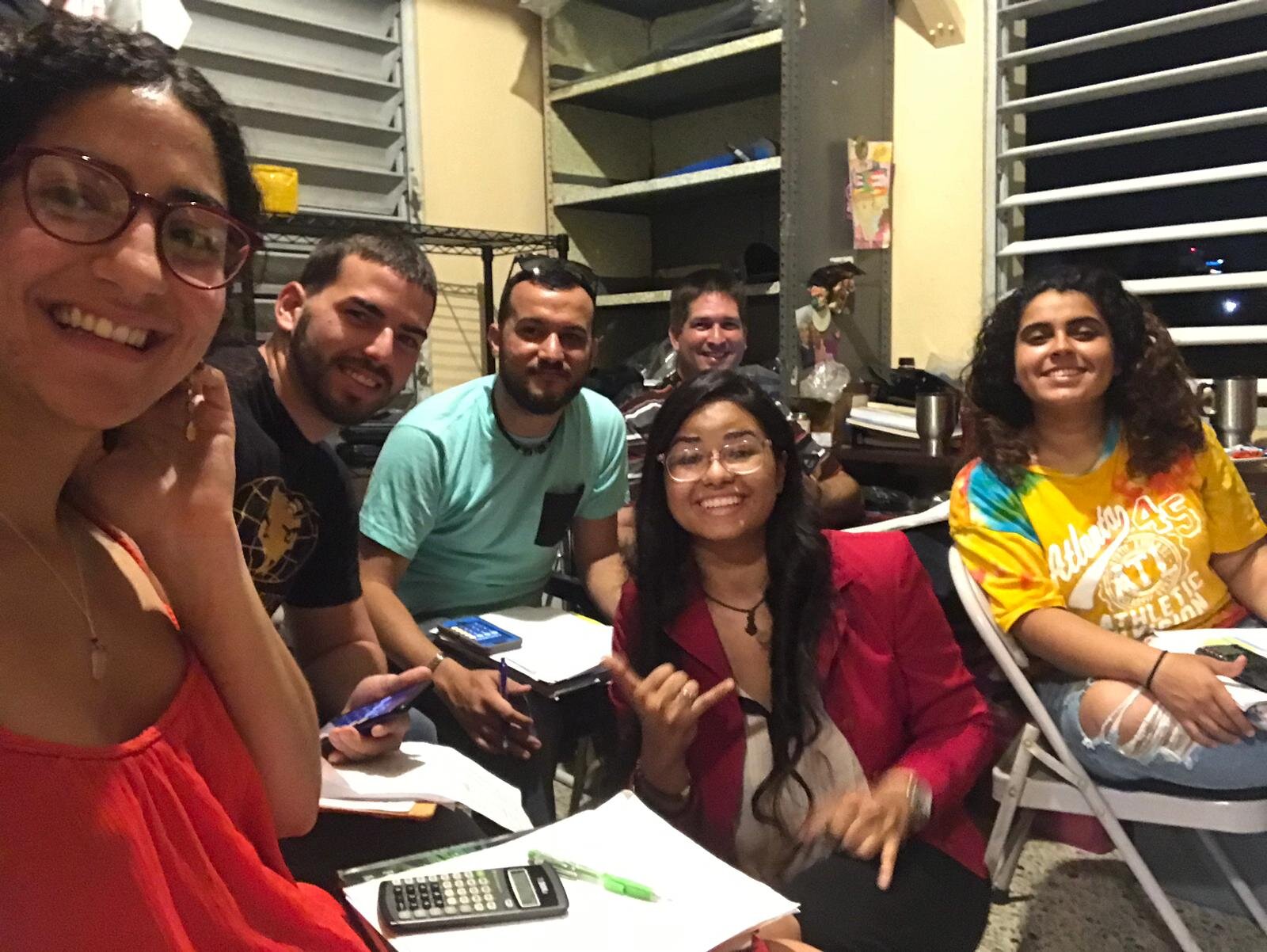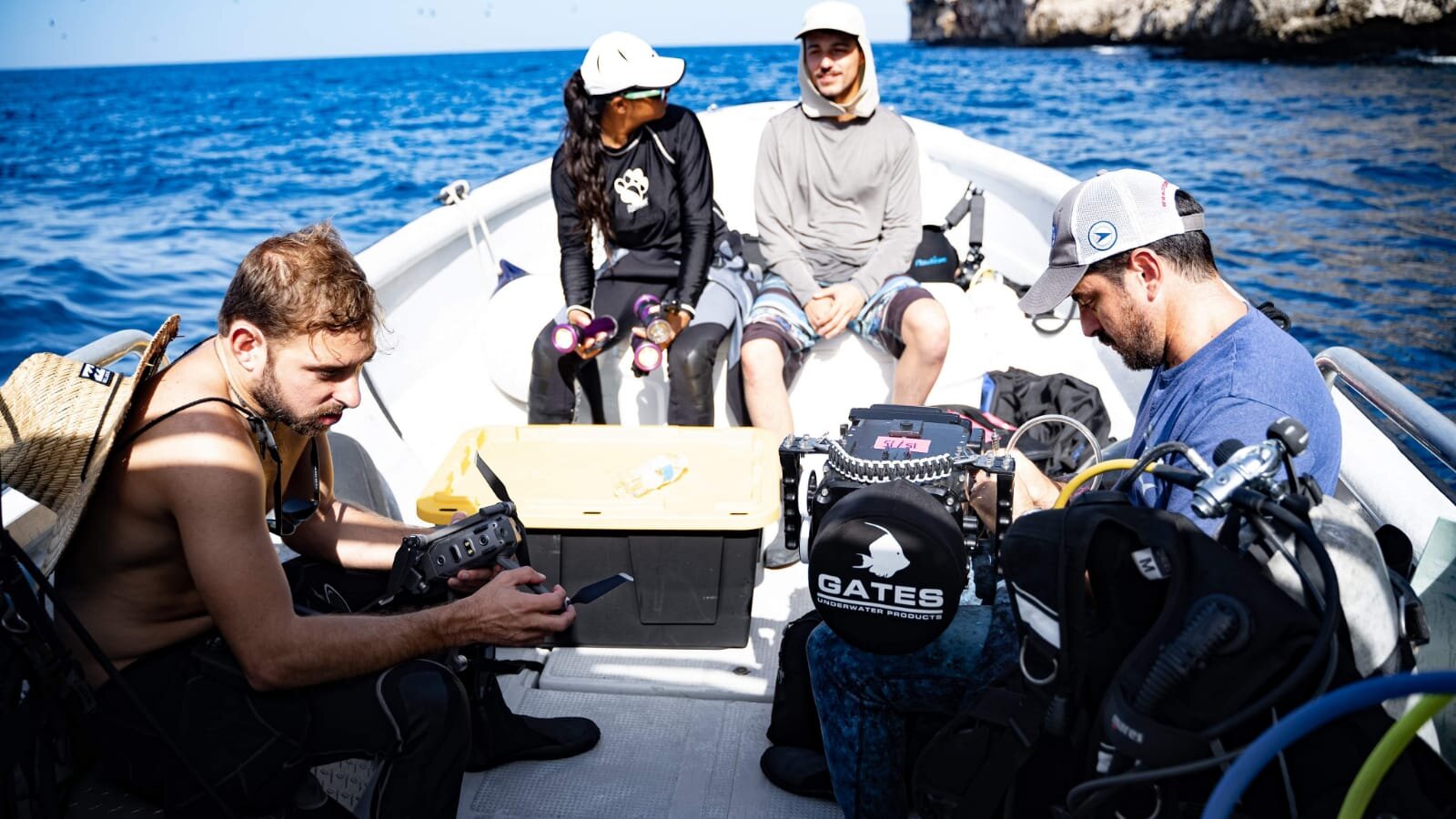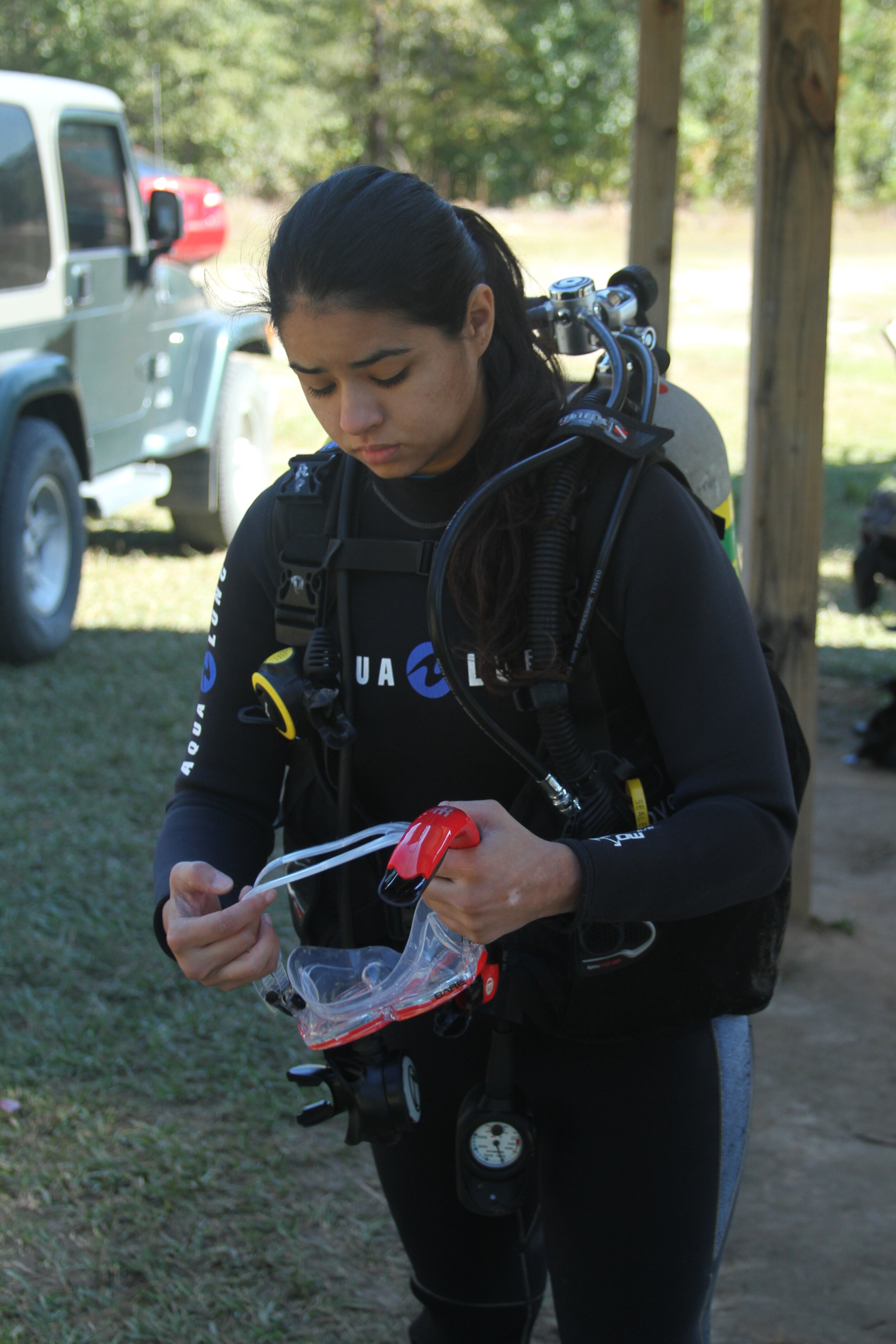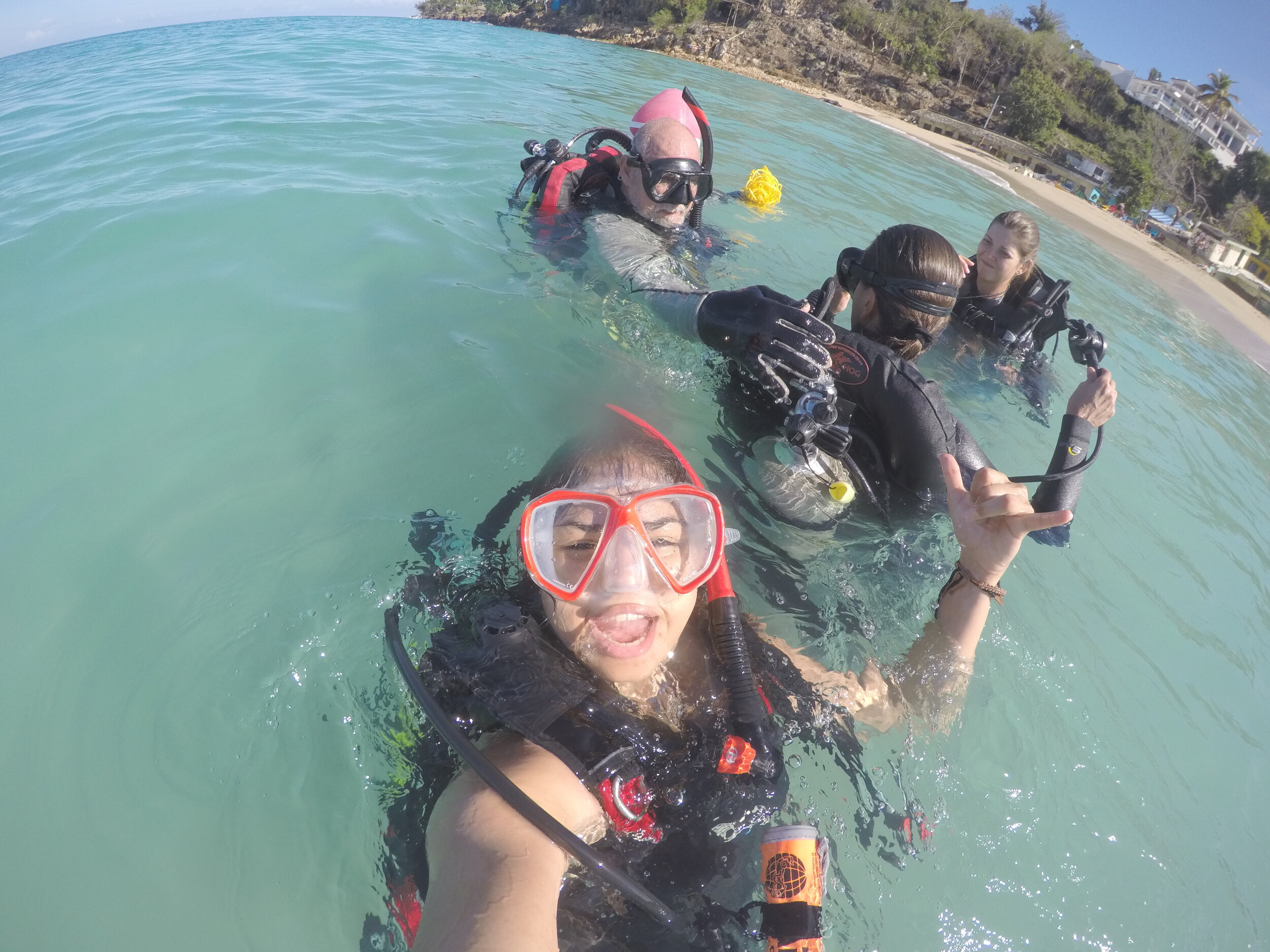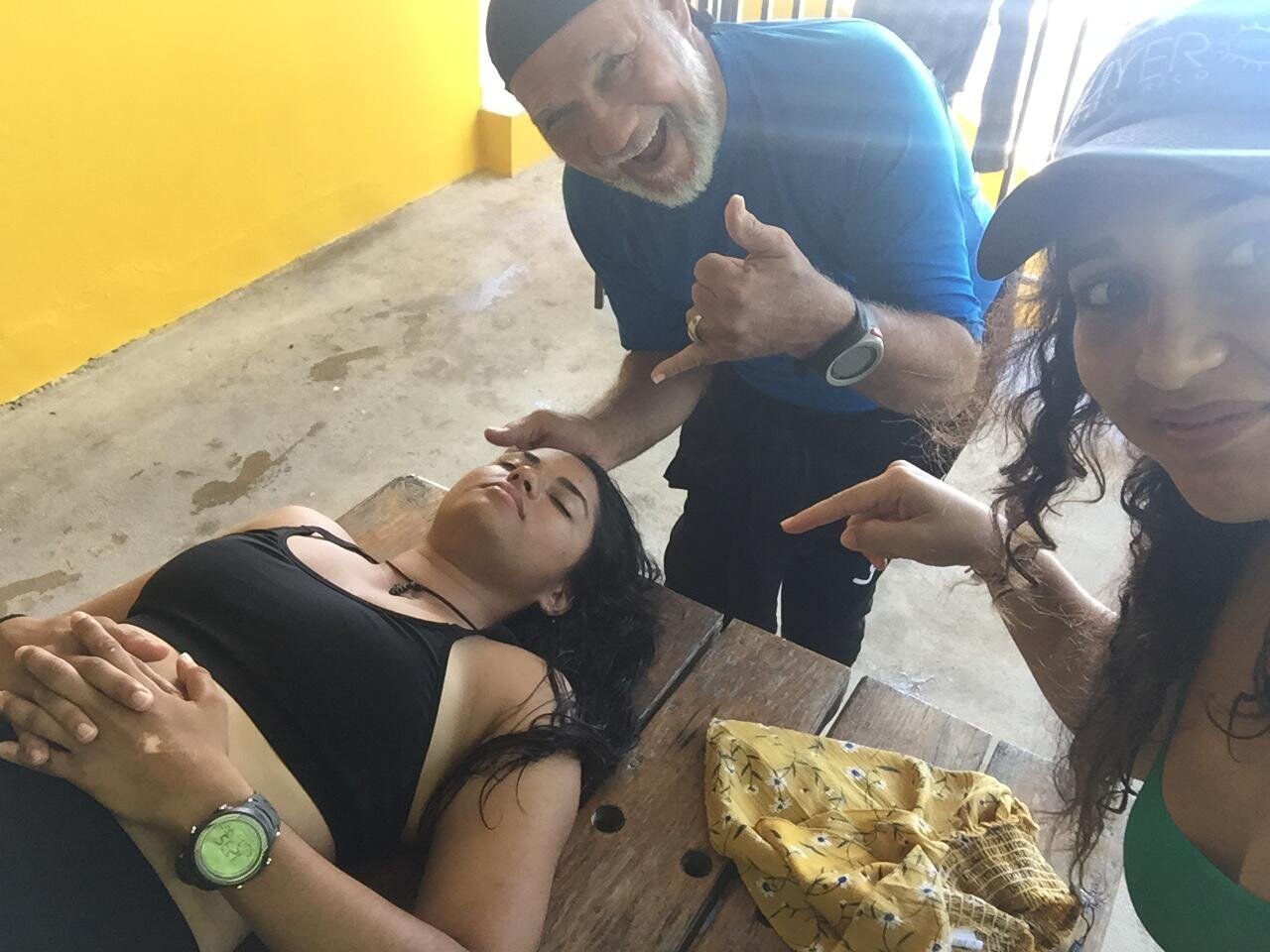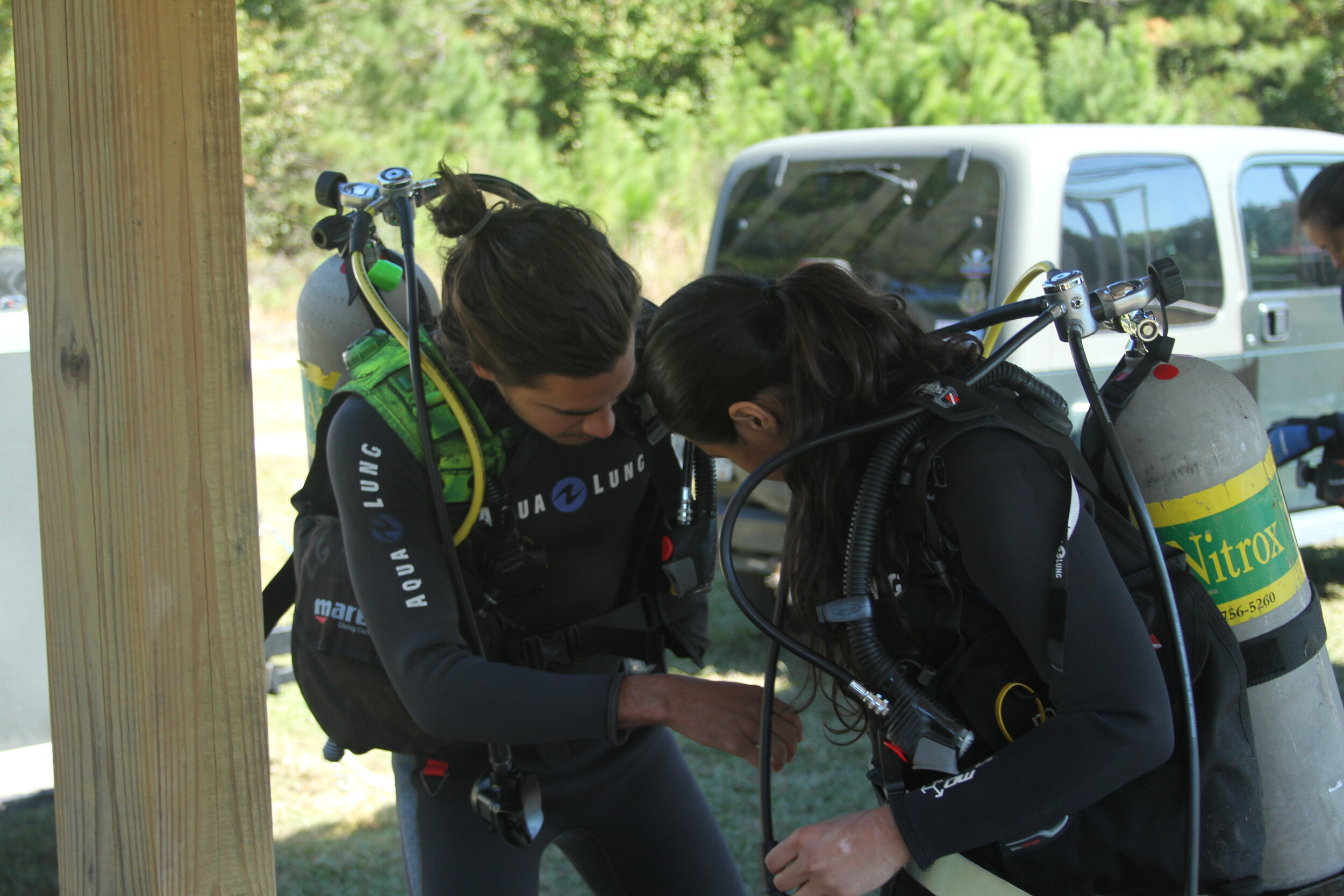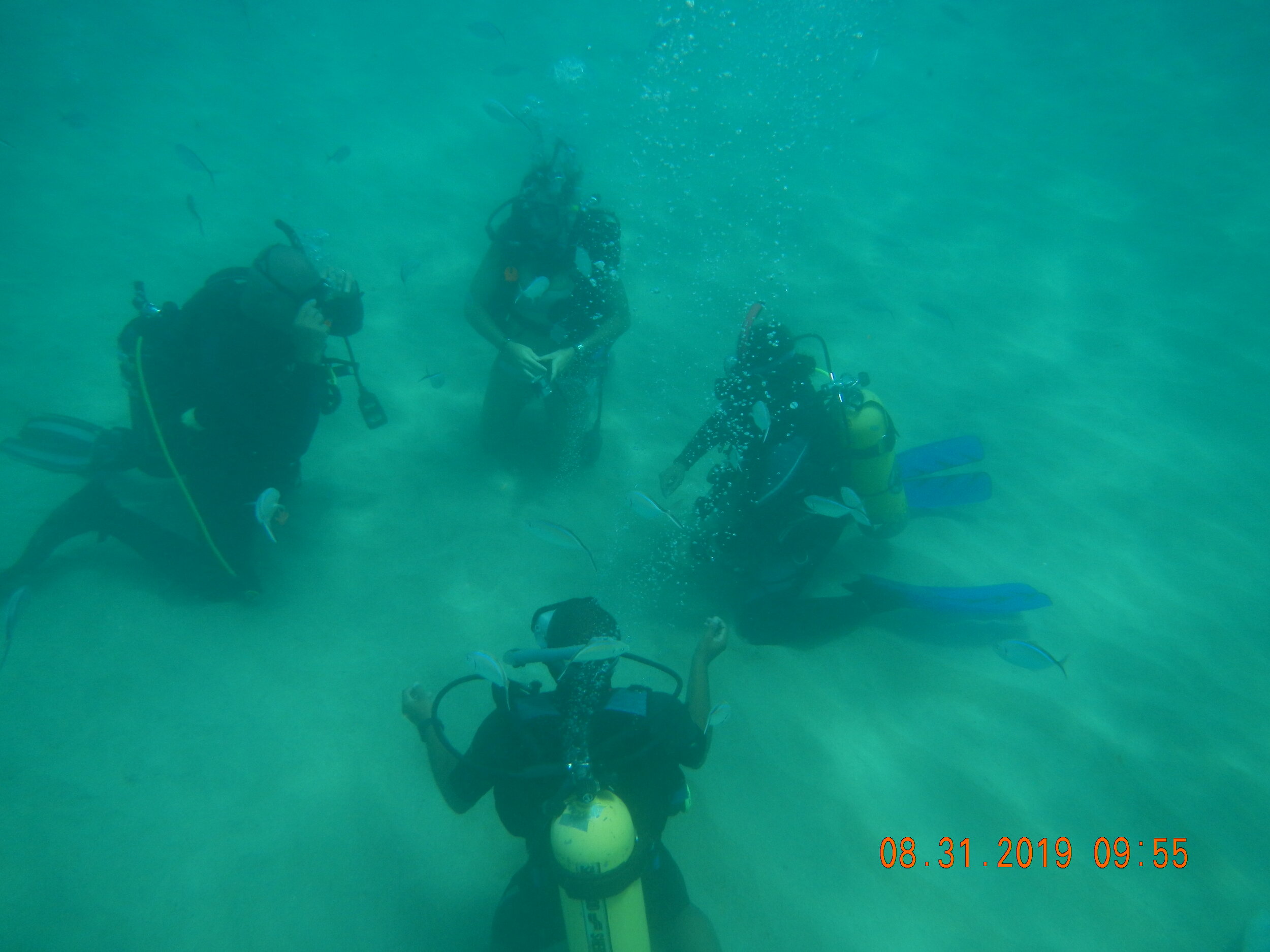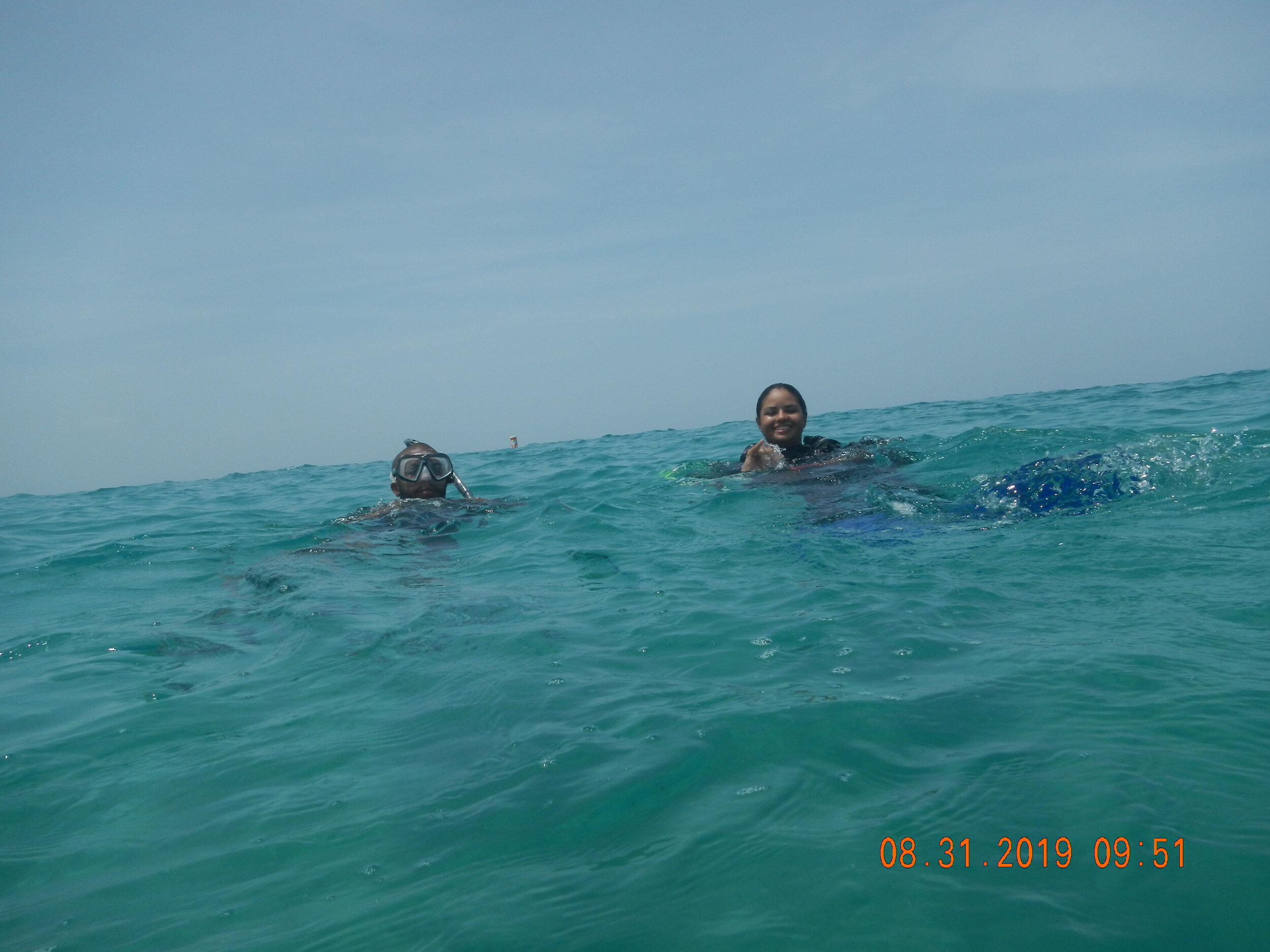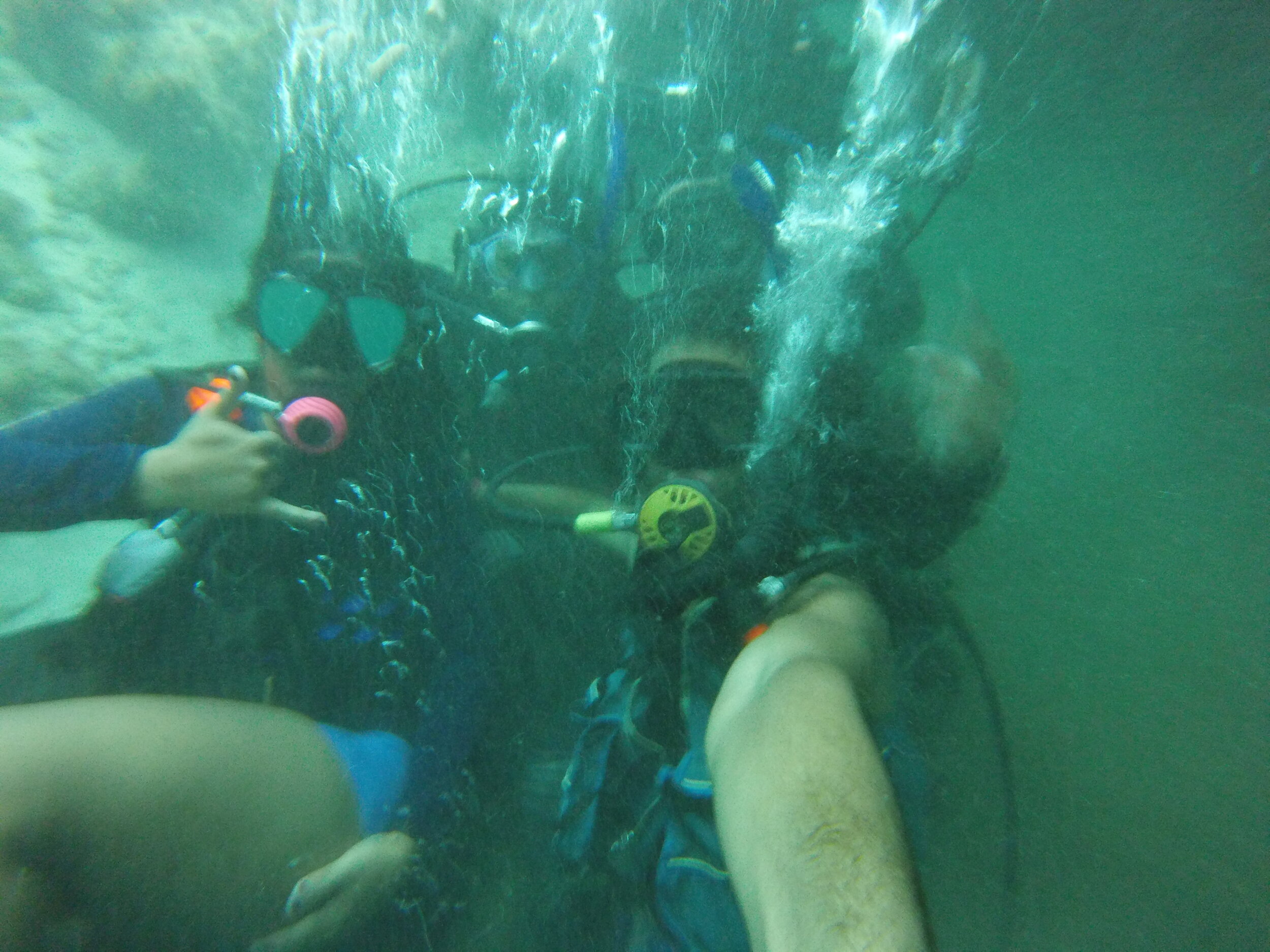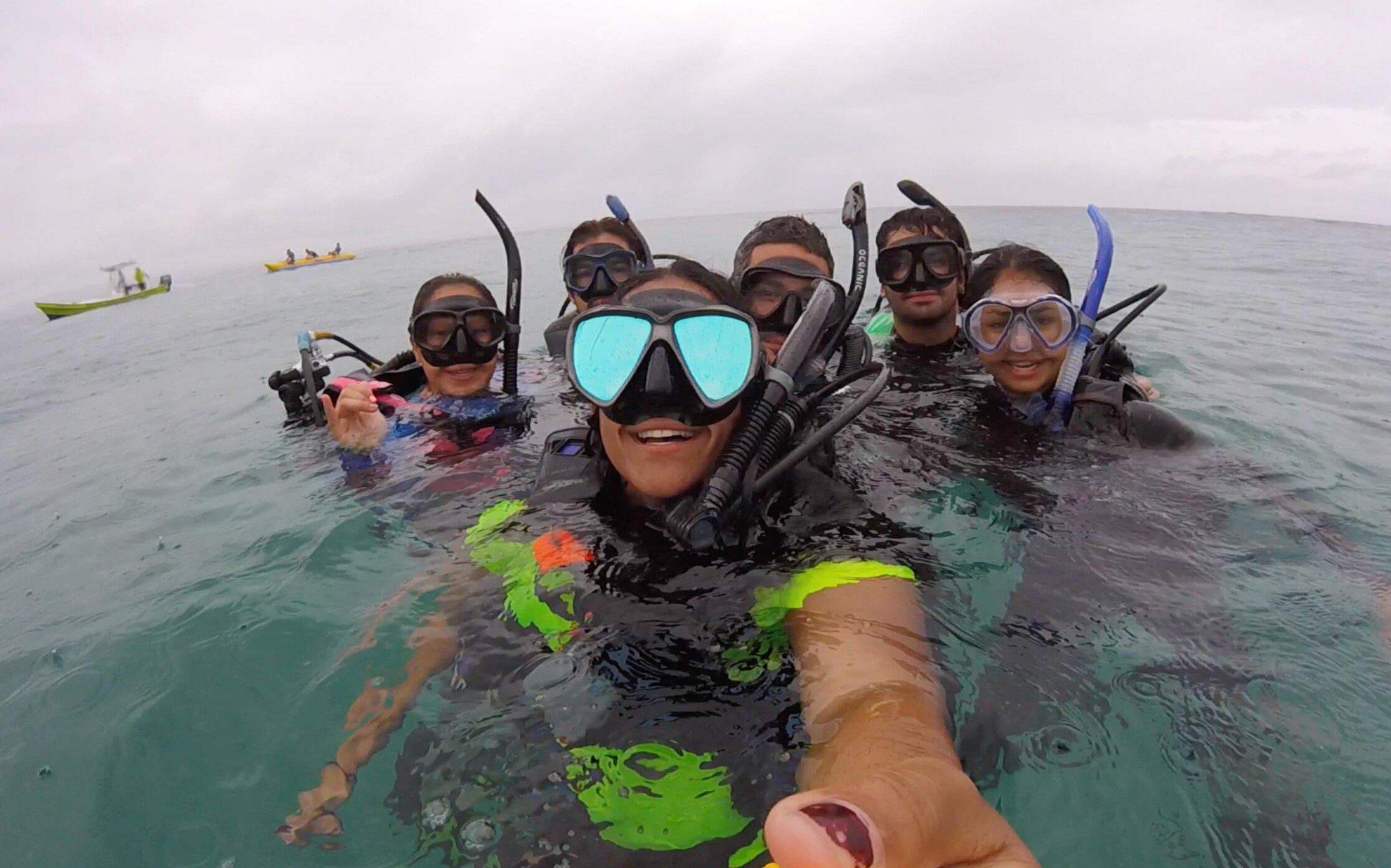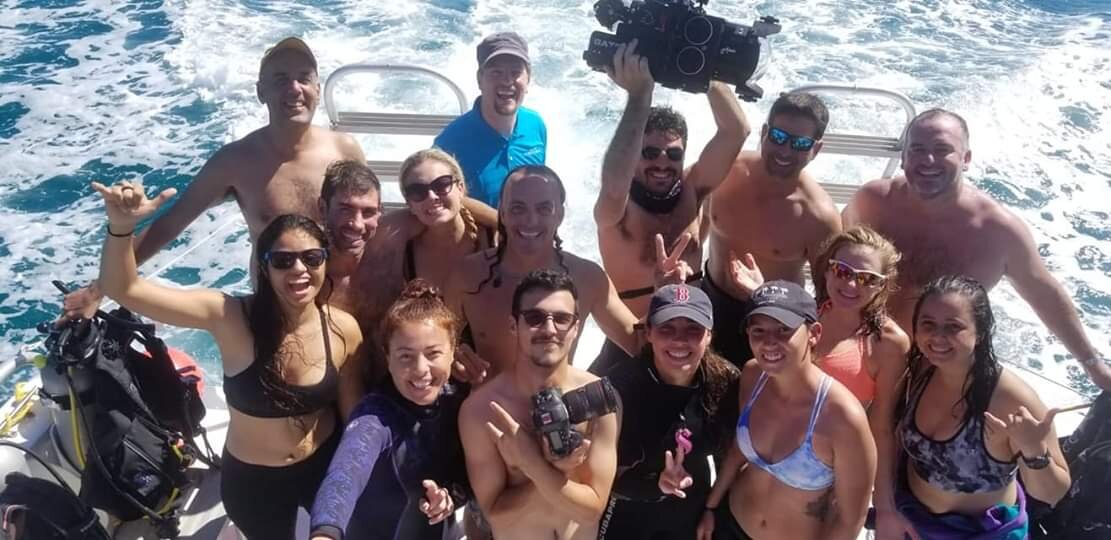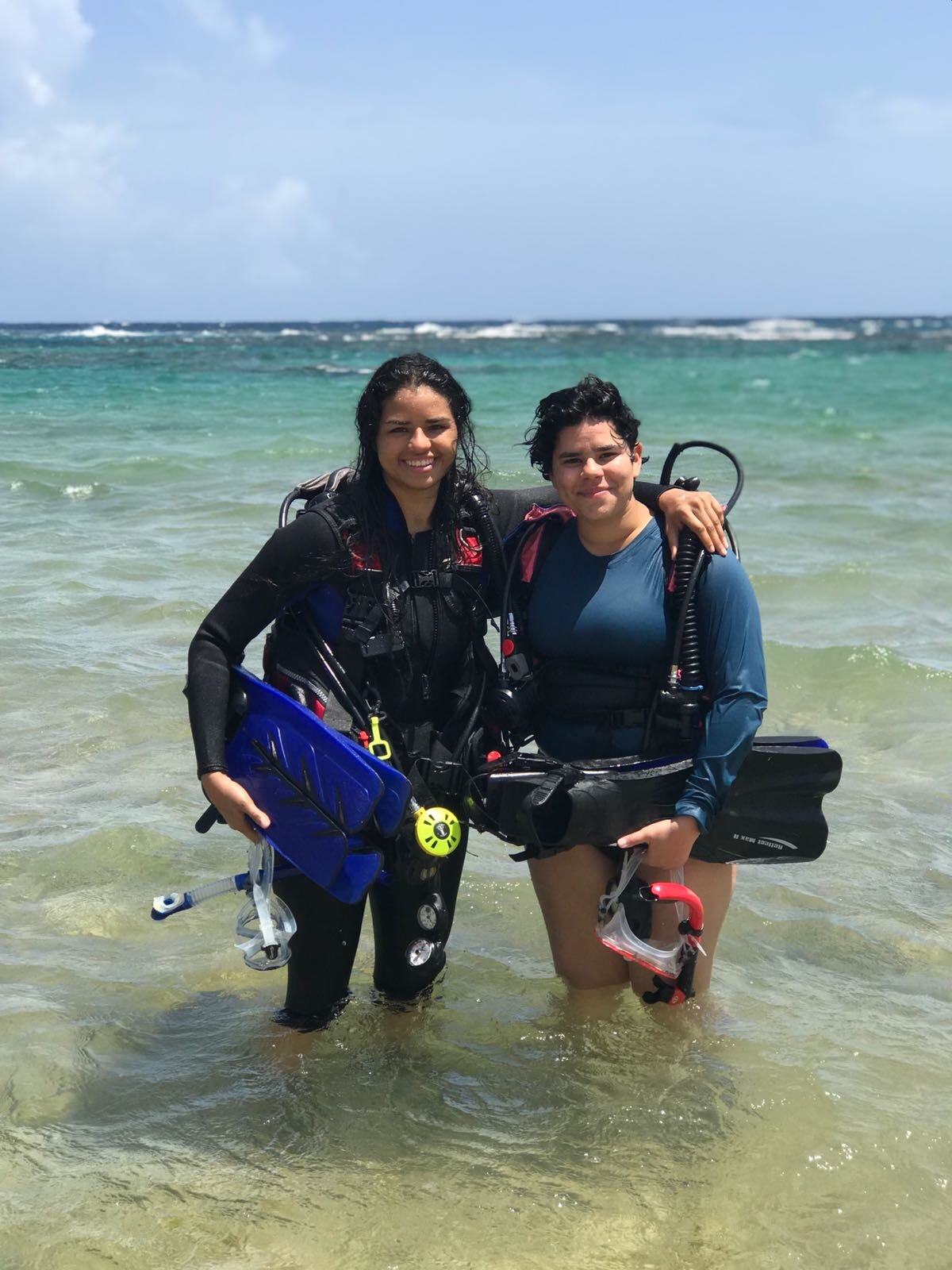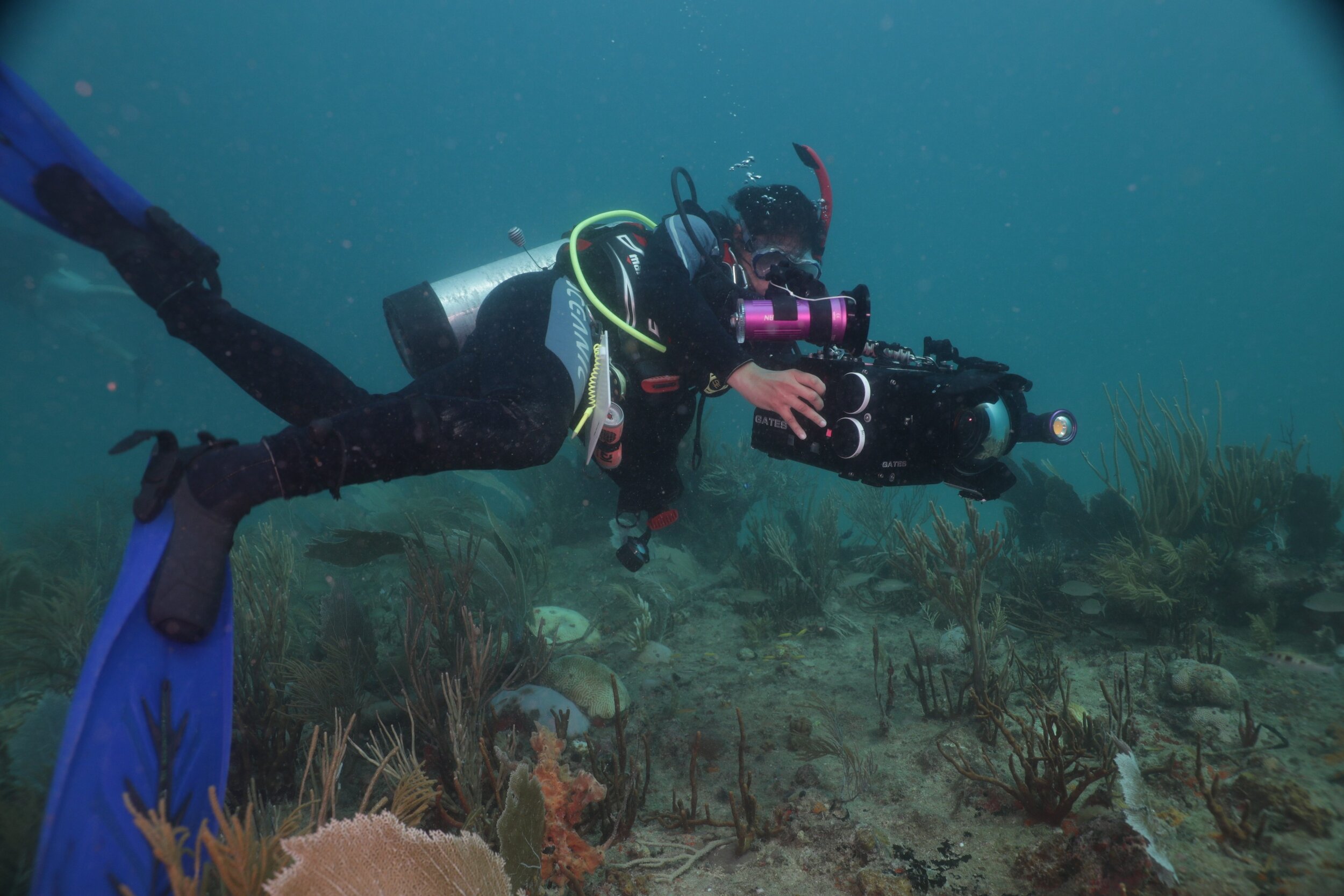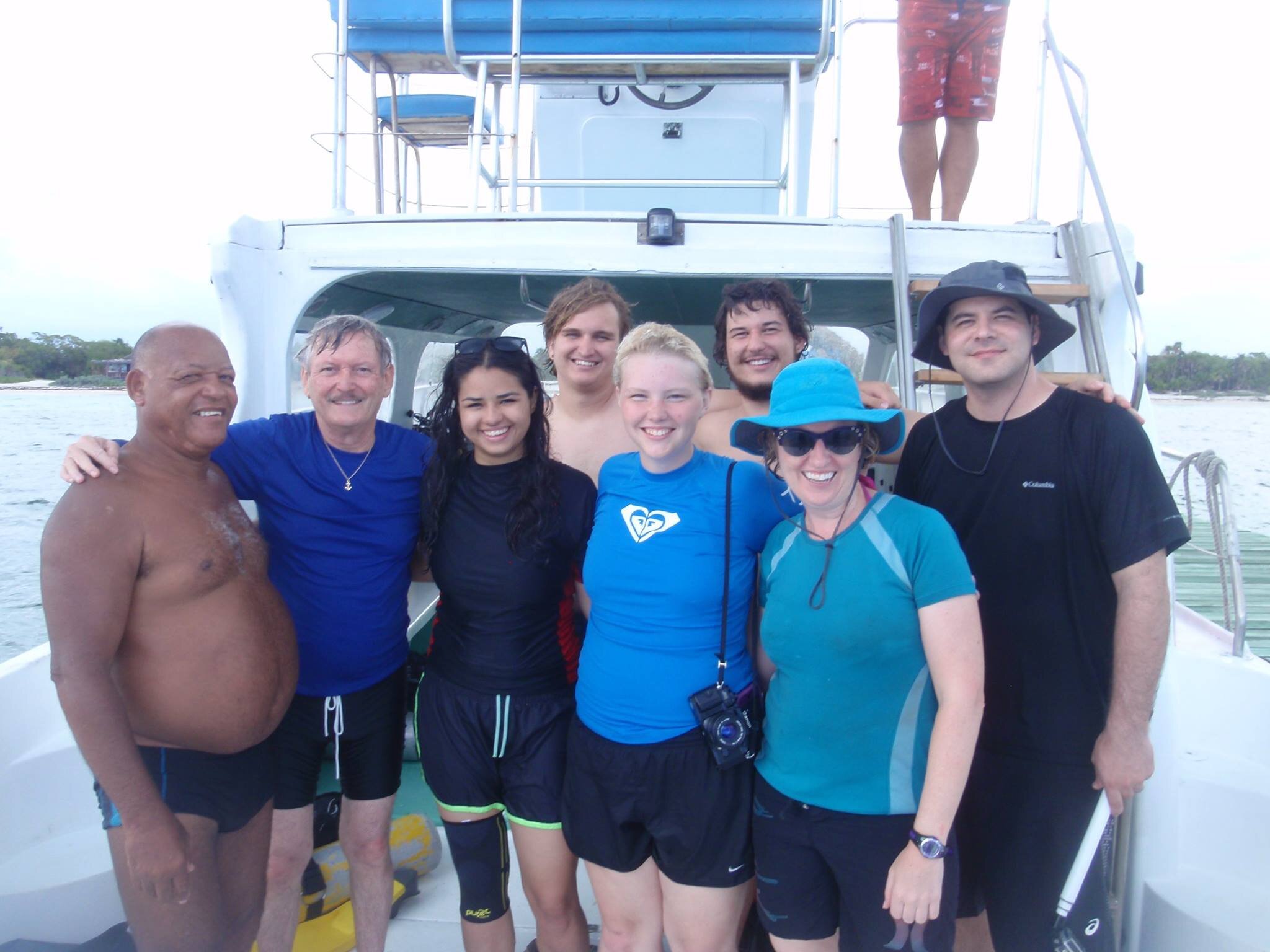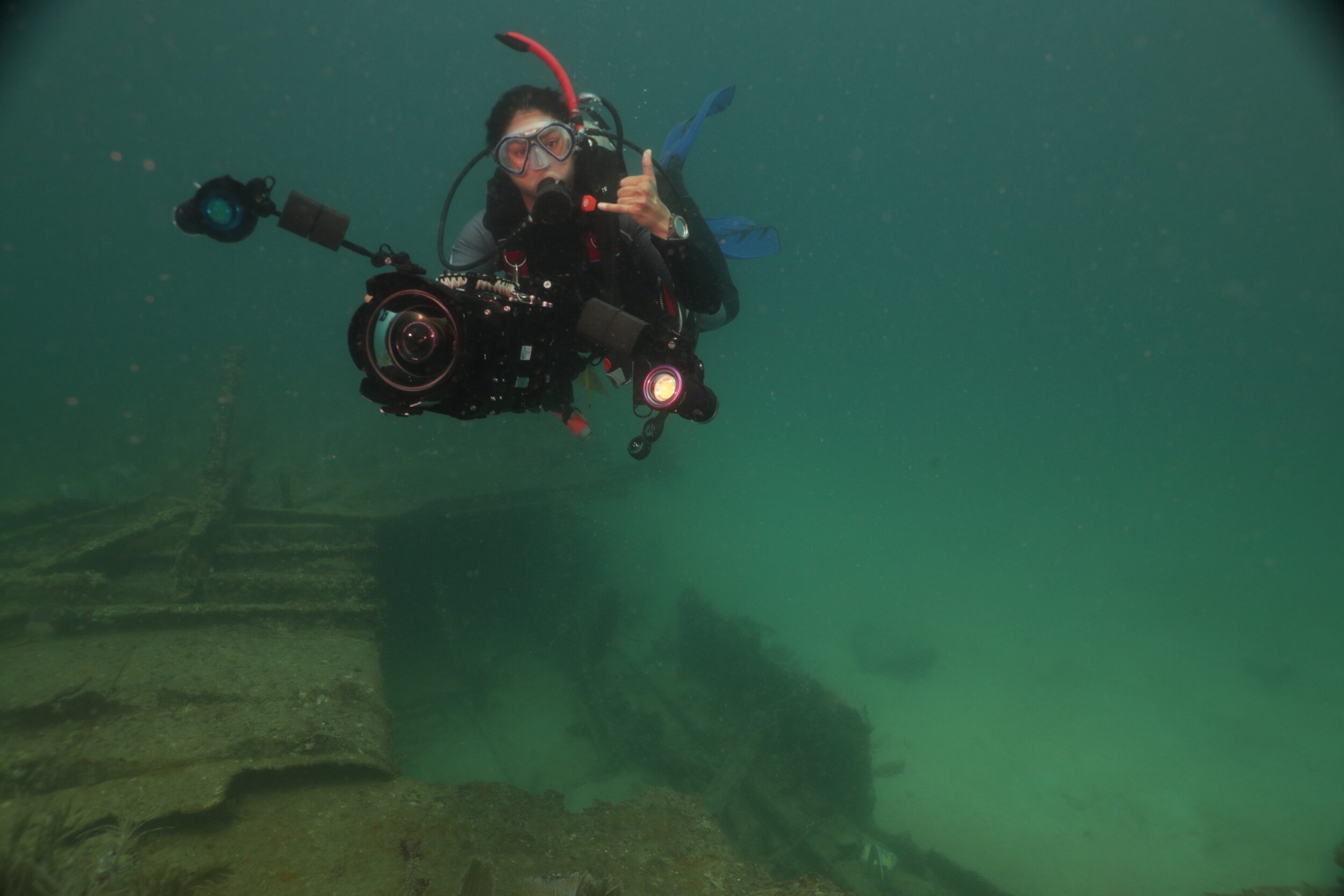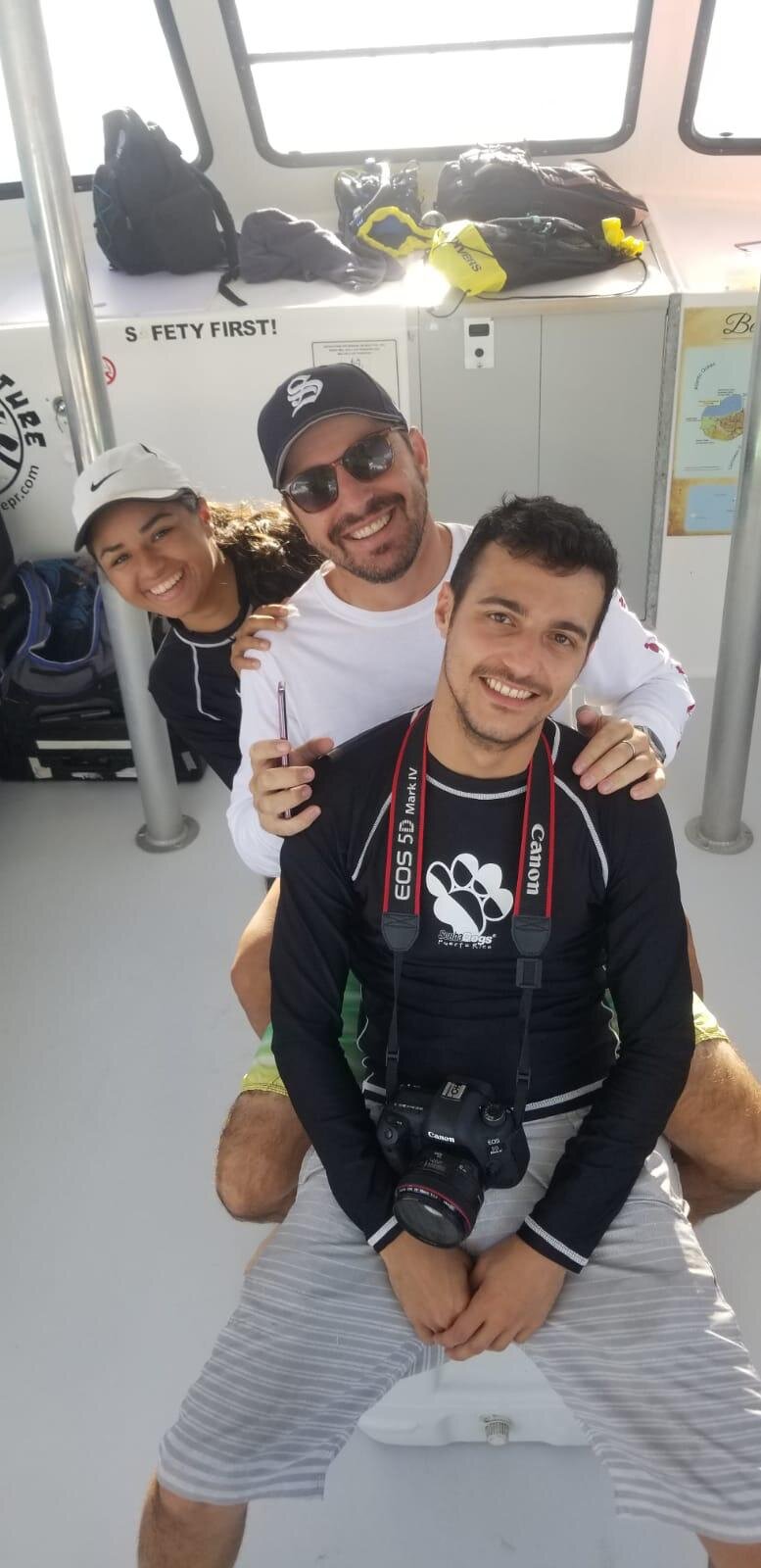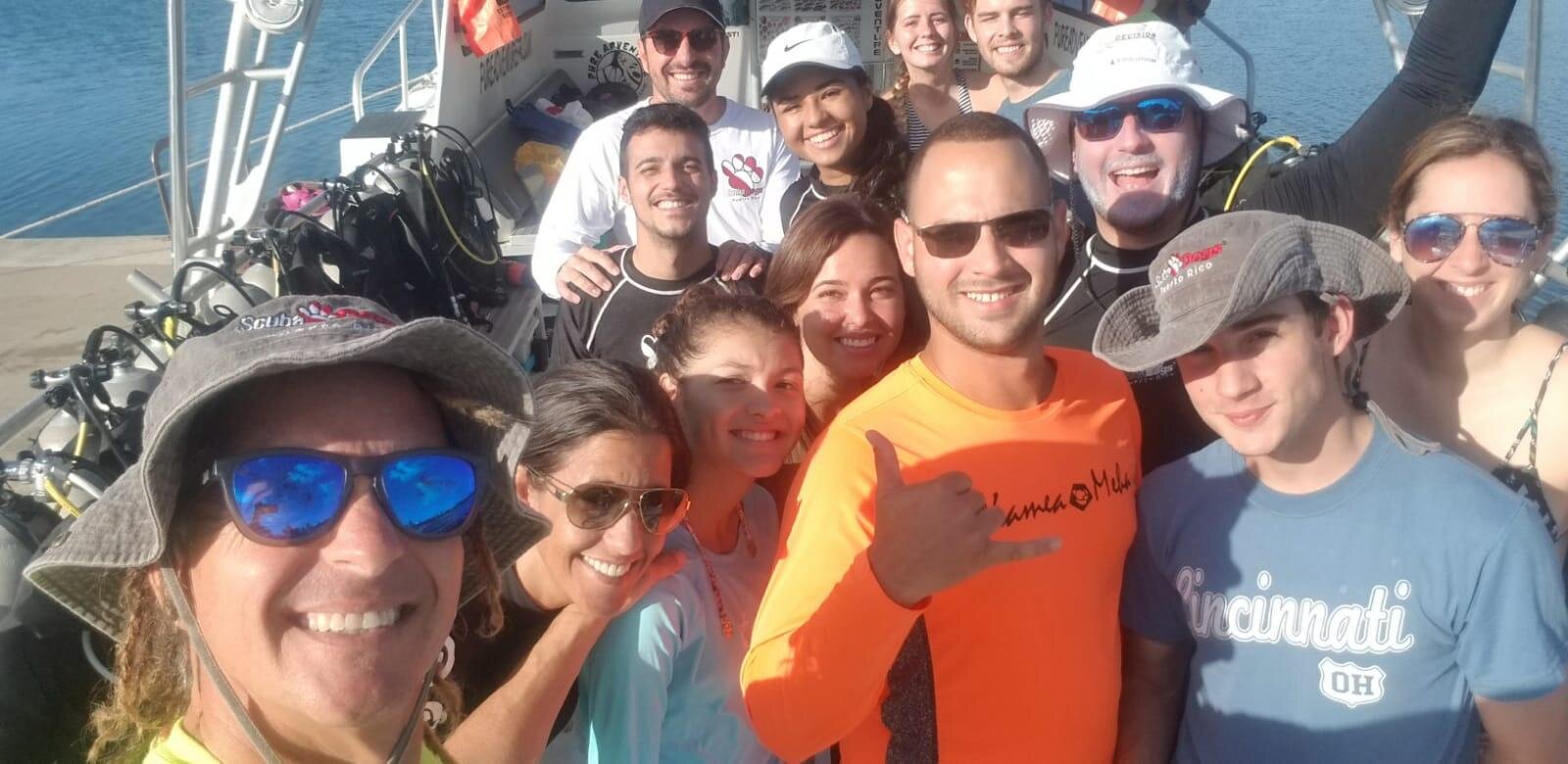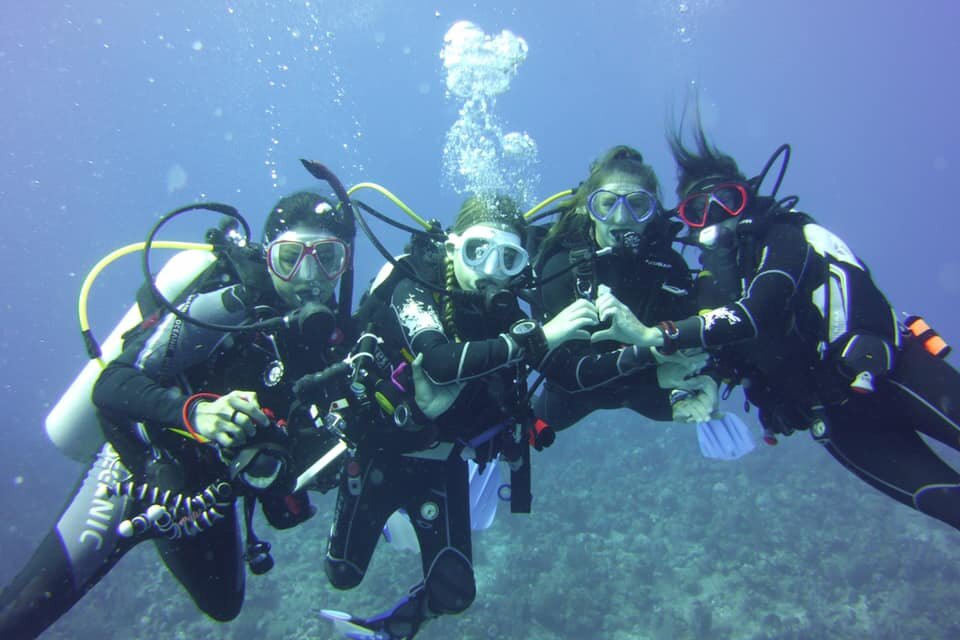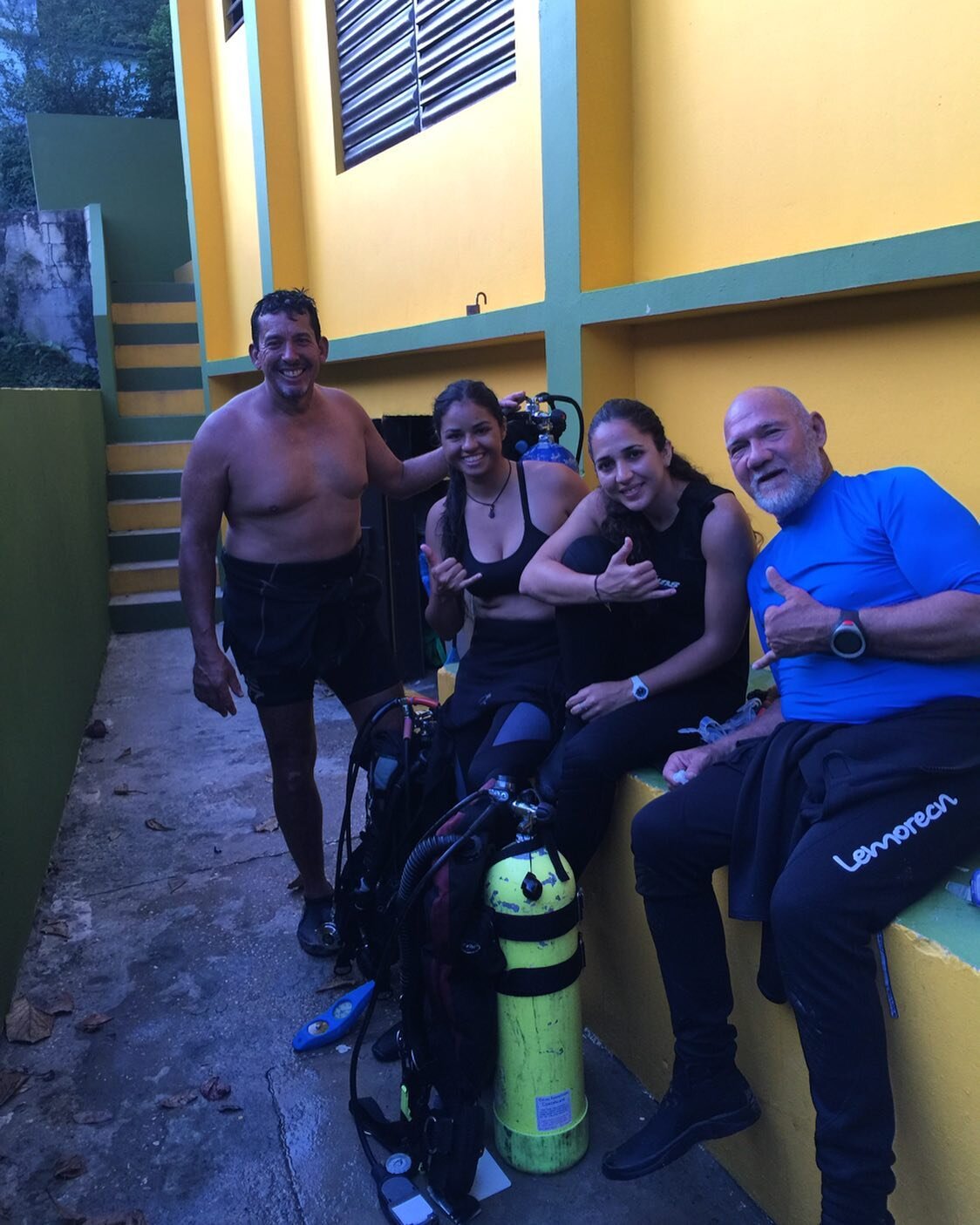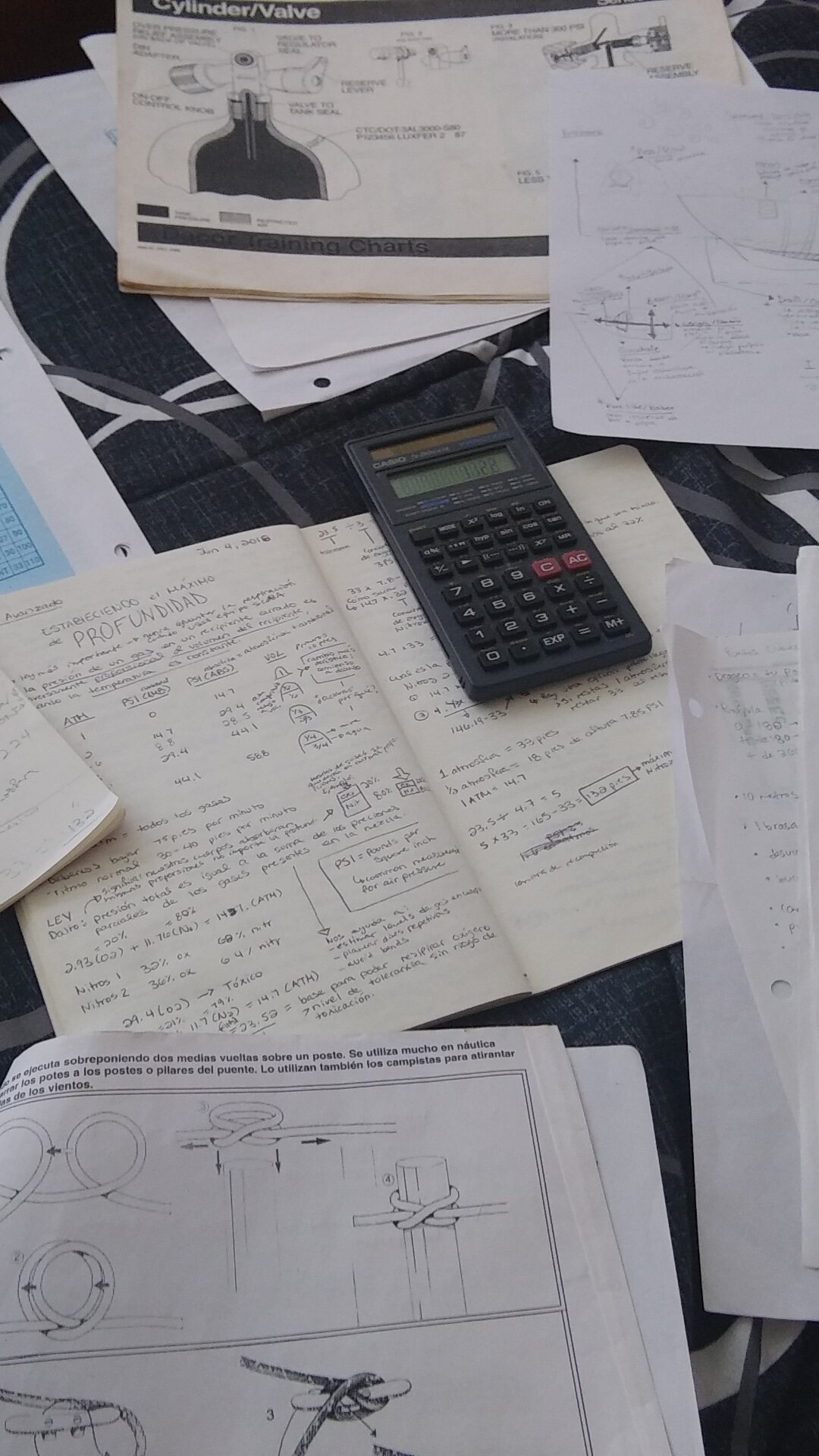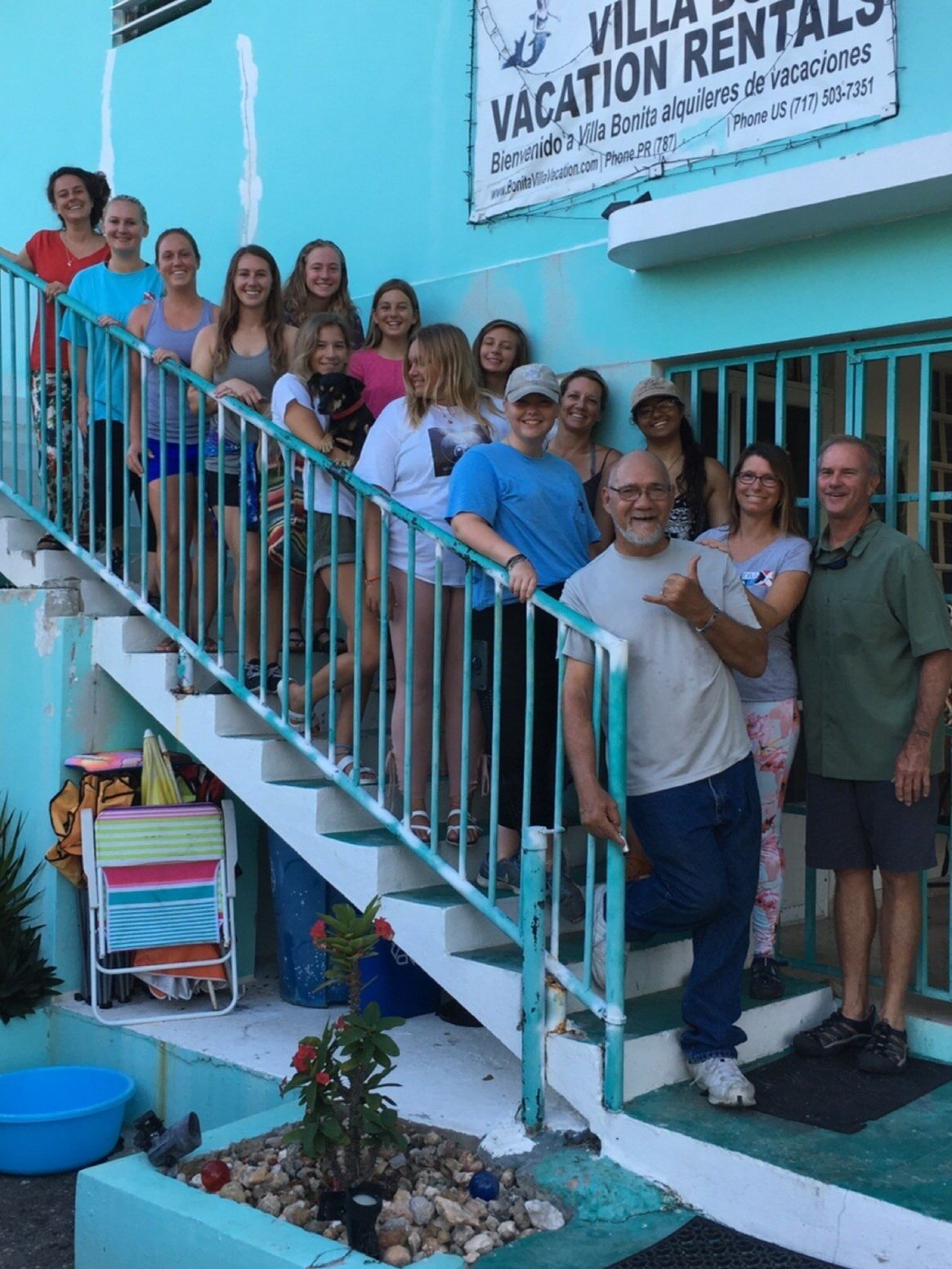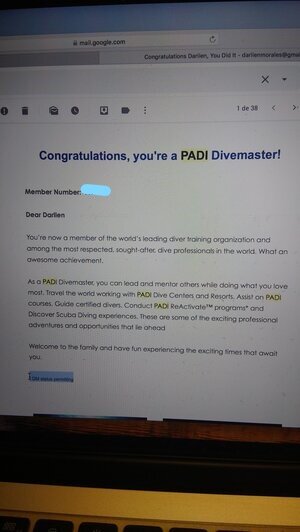Underwater Cinematography
The following 6 Steps are intended to help guide someone that has no idea how to begin. In a way, you can say it is me talking to my younger self - recommending books, basic gear, breaking down some real life scenarios, and so on. It is an overview that can help you get into the right mindset with clear expectations and goals.
Want to take your cinematography to a new depth but don't know how to? (pun intended)
Underwater cinematography is a marvelous practice that is limited to a few, mainly because it’s astronomically expensive. That’s why it is primarily so hard to put into practice. On top of that, it can be a challenge to prioritize the areas of focus, unless you are already submerged in the niche.
I remember when I was first trying to wrap my head around it all, The housings, the air tanks, the ports, the weights, the lights... An entire world of its own.
So where to start?
** Note: Though some tips here may apply to free diving, this post will only focus on scuba diving. **
The following 6 Steps are intended to help guide someone that has no idea how to begin. In a way, you can say it is me talking to my younger self - recommending books, basic gear, breaking down some real life scenarios, and so on. It is an overview that can help you get into the right mindset with clear expectations and goals.
# 1: Crave the ocean
Be honest with yourself. Why do you really want to pursue this? It sure sounds fun to envision yourself with a camera underwater, but why is it that you want it? Even if you already have an inclination for the ocean, tap into that part that gives you more than just thrills. Learn how to reconnect with it regularly. This specialty takes more than just mastering the camera or liking marine life. Your answer should have a strong connection with the ocean; it takes a lot of energy and resources (specially money and time) just to get started - and more so, to stay motivated.
Can you spend hours looking at a starfish that has not much action going on at first glance, yet sparks curiosity in you with its colors, shape, movements, and behavior?
Underwater cinematographers often times are needed as a second unit camera: focusing on all the details that make the experience of the story come together. That was my main goal when working for the Puerto Rico episode of Planeta Calleja, with Chef José Andrés. Though I captured some action, I was tasked on finding all the creatures that made the dive an experience of its own. The jelly fish dancing near the surface; the moray eel popping its head out of the coral structure, willing to protect it’s home; the fan corals‘ swinging by the currents, inviting you deeper into hidden treasures… You get the idea.
Learn about species that call your attention, to start building that curious muscle. If you have never gone scuba diving, I would suggest you take a ‘Discover Scuba’ with a trusted dive shop or Dive Master. This will help you get an introduction into the exciting wonders of the underworld. You won’t have to worry too much about the gear, aside from the basic safety parameters, of course. Their sole mission is for you to enjoy it and return. If you feel you like it, then you are ready for the next step.
The beach was the best playground I was ever taken to as a child. As soon as I sat foot on the sand, I would run to the shore collecting seashells and making a game of finding starfish, sea urchins, and crabs - all before my time was over. I knew my limit was determined by the adults. Who by the way, also enjoyed this playground. I fondly remember how my grandpa, mom, uncles and cousins had the traditional swimming race to the buoys in search for ‘jueyes’. I was later able to join them in my teens with upmost thrill. I shared their competitive spirit to get to the mark first, but not so much their desire to hunt and cook the crabs for dinner that day. Baby crabs wondered on the buoy line, while the larger ones lived in a cave-like coral structure (passed the swimmer buoy line). After acknowledging the winner, some of us would rest on the line to catch our breath, while others would go straight for the hunt. I would mainly stay by the buoy line, following the path of the little crabs, mesmerized by their funny walk and feeding habits.
STEP 2: Become a scuba Jedi
Scuba diving has to be a second nature to you: understanding the gear, physics, your own body’s limitations and reactions are paramount to a safe dive and consequently, jaw dropping footage that will last you a life time.
To scuba dive you don't have to be a great swimmer, and some argue that you may not even have to know how to swim. But since you want to be all fancy dancy and take a camera with you, I would highly encourage you to at least have decent swimming skills.
This can come in handy for the buoyancy skills that you need to master for this cinematic journey of yours. Buoyancy takes a lot of practice; it is a combination of your body's position, breathing patterns, comfort-ability and experience. Knowing how to work the camera won't do you good if you don't have good buoyancy control.
Taking a class designated for this skill can help, but bottom line it is best to just dive a lot. I mastered mine by having very patient friends devoted to teaching me on every dive together.
It is best to train when stakes are low. This means no productions that require your uw cinematography with crushing deadlines while you take the courses. That way you minimize the stress and danger factors, so that when the stakes are actually high and a production needs your services, you have been able to build a set of confidence and skill that will help you get through tough situations.
Becoming a highly skilled scuba diver is important, period. Not only are you responsible for your own life and expensive little gear that is often worth more than your car, you are also responsible for your buddy’s life... Yes, I’m not kidding. This is standard in every dive, So you better be sure you know how to dive properly, because as you can see there are a lot of things you need to be aware of at the same time!
Sure, a lot of times you purposely team up/hire someone that has your safety as their main goal during production, but because “ what can go wrong, will go wrong….” and not every time you are ‘lucky’ to be teamed up with a scuba guru - you better plan for the worst case scenario. Take whatever time you need to really understand it all. Go diving a lot and when you do, don’t bring any distractions (like a camera) until you can do these in a heart beat:
Set up your scuba gear
Communicate through underwater sign language
Be aware of your needs (and act accordingly)
Aware of your buddy’s needs (and act accordingly)
Understand weather and current prognostics (know when to and when not to dive)
Navigate with a compass
Control your buoyancy
Though, I got my NASE Open Water Certification in 2014, mainly to shoot Beneath Paradise, my senior film, I joke that I was never a diver. When I look back, I realize how much I sucked at it all. Firstly, I took an online course followed by the theoretic written test, both on the same week. Later, on that same weekend, I learned all the practicality in a lake - never sat foot in the ocean, yet got my certification in record time… About a two day experience overall…Mind blowing, I know! Now that I know better I see how I was rushing things and the scuba shop wasn’t going to say no to my money.
It wasn't until I began my PDIC Advanced Certification in 2018 that the real journey began. I was determined to learn no matter how long it took. I trained with different instructors from diverse agencies and styles. I grew so fond of the experiences of diving, that I continued onto my Rescue Diver Certifications (ended up getting both PADI and SNSI), all leading to my PADI Dive Master. I connected with divers from different backgrounds. Got a thrill from it all and before I knew it, a little over a year had passed. I was more underwater than above - everything, my house, car, hair - all had sand, salt… A constant reminder of the ocean and the friends made by it. One of the best parts was going to sleep and feeling as if I was still floating in water.
STEP 3: Learn animal behavior
Understanding animal behavior ties with both safety and composition. For instance, if you know how the animal moves, then you can anticipate where they will be in your frame. Additionally, you may be filming a venomous or aggressive specie that requires a certain amount of distance.
There are a lot of factors that need to be considered. Some animals are drawn to shiny things, colorful things, specific sounds - all which may be good or bad depending the circumstances. Remember, you are a visitor in their world. Many of these animals are territorial. Be a good lad and do your homework. Just like when you are about to visit a friend at their home for the first time, you should try and learn at least a little about the ‘host’ before you get on their wrong side.
Every place you visit has ‘the regulars’, people that often visit the same place at the same times for similar reasons. This is no different to underwater creatures. Get familiar with the animals that are known to venture the waters. Talk with local divers. Chances are you’ll learn something new and/or start new friendships. Either personnel from a local dive shop or divers that just got out of the water. Many plan their tours purposely around specific animals. Your dive can become much more enjoyable if you know what to search for or expect.
On that note, take advantage of the times at the surface to connect and learn with the divers in your group. The three main opportunities I see are:
Gear preparation
While setting up your gear or helping someone else with theirs, start a conversation with the Captain, Dive Master, or crew personnel. Ask them about the are you’ll visit, the animals they are excited to see. and so on.
Surface interval after a dive
I think this is one of the most helpful ones, because you all get to share what you saw recently. By this time almost everyone is excited and thrilled to share their experience. This helps you know what to look for on the following dive (of that same day).
Heading back to shore
It’s nice when you are cruising on the boat or peddling back to shore after the excursion is over. The mix between relaxed and exhausted can lead to good conversations that can set the time for future adventures between ocean lovers.
Now, if you are intentionally needing to film an animal for a productions then, with much more reason you need to understand their behavior. All the resources are placed on that ‘money’ shot - the one you are hired for. If you know you are encountering sharks, you need to know what type and so on. Use the internet to your advantage, read on the subject, contact scientists specialized in the animal or organizations that protect the specie. Know the subject enough to maintain a conversation. You are a stronger uw cinematographer if you can aid the production in the right direction.
And always keep in mind that no matter how harmless the creature is, it is important to maintain boundaries. Respect their home and do not harass them. Many divers get carried away by the encounters and forget to realize when and if the animal is uncomfortable.
Here I was capturing content for Eat Drink Share Puerto Rico with a RED Gemini camera in a Gates Housing at Humacao, Puerto Rico. Picture taken by Jean- Paul Polo with 1DX Mark 2 (24-70mm/ f/2.8)
On almost every dive we have a mission to capture a specific animal. This could be due to the fact that that animal is the star of the show or because that animal will help establish the location where the story takes place.
The lion fish (BTS image above) for Eat, Drink, Share Puerto Rico was the main subject. It is an invasive specie from the Indo-Pacific that can live in Caribbean waters. It is venomous, so we had to maintain a certain distance. Though they are common to find, we worked with a scuba instructor who is also a fisherman. That way we doubled the possibilities of an encounter.
Accomplished to capture the lower picture, (green turtle) for Discover Puerto Rico’s Culebra Promotion, because they feed on sea grass and often swim to the surface to breathe. Went to Tamarindo beach, which has a large sea grass area and spent several hours patiently snorkeling the area.
Shot on 1DX Mark 2 / Nauticam housing/ (24-70mm/ f/2.8/ natural light
STEP 4: Set a realistic budget
I often times get asked what gear to buy, when to buy, how to go about it…
Before you think of buying the camera set-up of your dreams, think about your scuba gear first. This goes back to the ‘Step 2: Becoming a Scuba Jedi’ - you need to be very comfortable underwater to perform well. A great scuba diver should be able to use any gear available if the necessity arises, but as a cinematographer, your shots will be way more precise when you wear something as if it is your own skin.
There are different price ranges for this, some more affordable than other, but know it ain’t cheap. A lot of people want comfort, safety and plain good looks while they dive. Figure out your needs and standards by discussing them with your instructor.
As for camera set ups go, don’t buy unless you have spare money to spend. Read it again. Spare money. AKA, money that wouldn’t hurt one bit to loose. This is a very expensive carrier, if not a hobby.
Every camera has a unique underwater housing, with lenses and ports designated to different configurations. There are a lot of variables and constrains within this world.
That’s why ‘Step 1: Craving The Ocean’ is so important. When you go into this, you need to be “A - OK” with spending. You may not envision yourself going over budget, but you will… Trust me. Between the gear, maintenance, logistics… Have a clear perspective on what it is that you want and why.
If you are getting ready for a specific production, clarify the needs of it and be really honest with yourself. Would hiring an uw cinematographer and renting gear be much more realistic due to schedule and/or lack of your team’s skill set?
If you already have a camera and want to take it underwater, check if it has an underwater housing available, otherwise it won’t work. Backscatter.com and Bluewaterphoto.com are good places to start. (Note this is not sponsored, I just use them often. There are other options available if you google underwater rentals or the like). Scroll through their video tutorials and package rentals to familiarize yourself with how things work and if at least your owned gear has the adaptability to fulfill your underwater production needs.
If renting or buying a professional set-up are out of the question, because you properly assessed your budget (yay, math!). Then I would suggest you save a couple hundred bucks to get started with a GoPro. These power horses are essential. No mater if you later have a professional set-up, you will still use it for BTS, and as a backup camera when things go south with the main camera (which happens very often when starting out). Its compact size and durability make it a great addition to your investment. I have had mine since 2014 and it is still going strong (knock on wood).
There are a lot of little pieces that make the whole for both the scuba gear and the camera housings. If you don’t make a budget or keep track of your gear goals you may not realize how much you really end up spending. The mind likes to play games… P.S. Special thanks to Chris Lopez for letting me borrow his BCD and regulator indefinitely. Couldn’t have dived as much as I have had the chance to, if it wasn’t for this act of kindness (abrazo).
I remember wanting to buy all the gear possible when I first started. I wanted the convenience and availability of having my own, specially because it is so hard to get your hands on a production quality monster. Also we were working on Sanctuary Sharks and Coral Keepers, two productions were a lot of the story takes place underwater. Thankfully I snapped out of it by having to pay bills, and other essentials. As I kept being hired for different productions I learned that because every production is different, often times, the needs and, hence, the gear, change more often than you can get a timely return on your investment. Newer models keep popping up - more than a rabbit keeps giving birth every year. So, when you buy, know you are locked to that ONE housing for that ONE camera model, for which some of the lenses you own may or may not have available ports.
STEP 5: Understand what the camera sees
Water is denser than air, therefore things will look different than what we are used to seeing above water. Refraction makes things appear 25% larger than what they actually are. Different colors get absorbed at different depths (for which you’ll need to compensate with lights or an array of red or orange filters). These are the bare bone basics.
‘Underwater Photography Master Class’ by Alex Mustard and ‘The Scuba Diver’s Guide to Underwater Video’ by Jill Heinerth are good introduction books for all of this. Also, this video made by Behind the Mask explains very well light and color. These take a lot of trial and error - specially color. Practice, practice, practice. This is one of the hardest to accomplish well, but once you get it you’ll work around it’s limitations to facilitate your post-production time. After this, the real fun begins and can grow exponentially if you like to test and experiment.
Both of these images were shot with GoPro Hero 4, Backscatter’s Flip 3.0 (by now they should be on the 5.0 or so) and a JOBY Gorillapod, at Looey Key Florida for Sanctuary Sharks. This build allowed me to play with filters, diopters and stability.
These tools help you find the balance you need to achieve between enjoying the dive, knowing when and how to call the shot, and not forgetting your gear behind. Having many pieces all over can be quite challenge. I lost many lights, clamps, and light arms when I was first starting.
STEP 6: Keep on keeping on
Scuba diving requires constant learning and maintenance of skills and gear. It is a sport in dippers... The first open-circuit dive was made on 1943! There is so much yet to discover. That’s exciting, because it leaves so much room for exploration.
If you want to partake in this sport, activity, career, hobby, whatever you choose to make of it, you need to have a clear understanding of how it is constantly changing.
Follow pages like Scuba Magazine. Subscribe to the magazine or e-blast of your certified agency. Continue diving specially without a camera, even after you have mastered diving with one. Help local shops. Continue reading. Discuss terms and concepts with other divers from different agencies. Often times they refer to things differently and may have a trick that helps you grasp the skill or theory better; everyone has a different learning and teaching style. The goal: brush up on your scuba performance anytime possible.
Don’t disregard your physical self. Your body is part of this equation. Good exercise and good diet is something you will learn to appreciate while first taking on the training. No matter how much of an athlete you consider yourself - diving will leave you exhausted. I am sure you know this but you need to acknowledge it constantly: the sea is tough.
On the camera side of things, again, gear keeps evolving and/or malfunctioning. Recently we did several camera tests with the RED Gemini/Gates Housing, since it has been giving us a bit of focus trouble. I had a blast setting it all, specially because I was able to introduce my dad into part of what I do for a living. He was so stoked to learn and help. Truly an outstanding assistant. I want to take him with me on a shoot or camera test at the open sea, so he can get the whole scope, but he first needs a Discover Scuba trip. Can’t wait!
Keep that scuba heart pumping even when you can’t go scuba.
For inspiration, challenge, or whatever you want to call it - it may help to just try to understand how shots you admire were captured. Composition, lighting, feet depth - all logistics. Some films that can help feed that admiration are BBC’s Blue Planet and Jeff Orlowski’s Chasing Coral (currently free on Netflix’s YouTube page). Also, when possible connect with photographers and cinematographers in the area. More often than not you get motivated to share your work, and even polish your old content.
Based on my experience, these are the steps that I find most helpful to set the course, but do tweak them your own way. We are not cut with the same cookie cutter. If something from this works for you or doesn’t - any other tips, steps? Tell me. Love to see underwater content out there. If we ever are in the same town - hit me up - let’s go blow some bubbles!
Find this helpful? Help support creative and educational content.
"After Maria's" Backlash And The 7 Tips To A Well-Rounded Doc
I just watched the documentary “After Maria” and I feel a combination of rage, sadness, and well… get ready for a rant… but know that is not entirely impulsive, or so I hope.
Let’s start by mentioning that the piece should have been called “FEMA sends Already-Accustomed-to-Federal-Aid Puertorricans To The United States After Maria”… My point is that the film is focused on a very specific part of what happened to some families after Hurricane Maria. The interviewees sure had their struggles by loosing their home and having to live six months in a Bronx hotel, but the lack of context of the documentary is what has people raging in social media. There is no real sense of what happened inside the island, the struggles, the joys…; of what happened to other families that did flourish outside Puerto Rico; there is no exploration of why the portrayed families felt entitled to the federal help which has to do so much with the colonial relationship between the two countries… There needs to be proper representation, explanation, coverage…
“The documentary is nothing more than the creative treatment of reality. In this way, the assembly of sequences must include not only the description and the rhythm, but the commentary and dialogue.” - John Grierson
The film aired on Netflix las week. This large platform counts with about 130 million subscribers and is seen in over 180 countries - of course locals are outraged - the documentary does not do justice to what was lived. By giving an incomplete message, the resulting piece is erroneous and misinformative. It feeds on the stereotype of the dependent puertorrican that lives from the government. To put it in perspective, think it this way: someone omits a truth to you and they say it’s not a lie, yet you are mad, offended… That’s pretty much wats going on here.
“A country without documentary filmmaking is like a family without a photo album.” - Patricio Guzman.
I don’t pretend to tell you to not watch it, like many are asking, all I ask is to have this very clear: the portrait of the families in the film are valid, but so is the story of the many others; the hard workers, the innovators, the vandals… The struggle for survival, lack of commodities…. Man, so much happened…. (read my experience to learn more), and I know its not easy to find the thread that helps reveal the story little by little, but that is part of it; documentaries are an exploration.
“You know, the process of making a documentary is one of discovery, and like writing a story, you follow a lead and that leads you to something else and then by the time you finish, the story is nothing like you expected.” - William Shatner.
Documentary filmmaking is a working process. We are all learning new things as we go and I am sure that no matter the many years in “the business” we’ll still be learning to make documentaries. So, with all that’s going on - what makes a well-rounded documentary? The answer to such inquiry like in most creative fields is the story. It’s the single component that the film lies upon. Once a story is identified the filmmaker must compose it accurately. And because accurate is a tricky subject, it should be treated with upmost sensibility. Stories have a special way of putting us inside other people - in their shoes…
Shoes memorialize victims of Hurricane Maria.
(Canon 5D mark 2; 24-105 mm F4)
Here are 7 Quick Tips to creating a well-rounded documentary:
Remain impartial and be open minded.
Your theories and ideas will change. Learn to adjust.
Characters require a voice.
Make sure you are getting multiple perspectives, specially if you don’t agree. Remember that, depending on your style, characters can be inanimate objects too.
Raise more questions than answers!
Again, documentaries are a process of discovery.
Films tell the truth even if the subjects don’t.
Taking an anthropological approach will help put this into practice.
High quality gear is not always a must have (or can have), but is a good plus.
Priority goes to sound over visuals, if you have to choose. People are more likely to view a low quality video than listen to something that hurts their ears.
Archival footage is your friend.
Sometimes this is one of the most powerful tools to help guide the story.
Sound sets a tone, use it wisely, don’t over work it.
Music, sound effects, sound design - it all should help you convey an emotion not force people to feel a certain way.
“ I am not Michael Moore. I think Michael Moore wants you to think how to think. He wants you to give you answers. I make movies to raise my own personal questions and not to give answers.” - Michael Moore.
Hurricane Maria’s effect on Puerto Rico brought many filmmakers and journalists - some opportunists others came with genuine intent to tell their interpretation. And the matter is that the public has no control over it - the stories they produced some that a few managed to see, still bring outrage. Heck, the media did a lot of sensationalism, but we were too preoccupied with living day to day - surviving. The difference now is that we can do what we couldn’t before - we have internet, we have a voice. So, now that we are slowly, but surely getting back on our feet, it so happens that “After Maria” gets backlashed.
I think in part this is because, we are still dealing with events after Maria. Hurricane Maria brought to surface and worsened the foundation in which Puerto Rico operates. There are still power outages, inconsistencies with water supply, economic inequality, unemployment… Sure a lot has bettered, specially for tourism and we are glad for it, but the arduous work towards a stable country remains questionable.
No one is happy; the radio, the tv, podcasts all have something to say about the documentary. Of course people feel it very deeply, the traumas endured - families burying families in their own backyards… over 2,500 deaths… there is so much that still resonates. Even when I see footage from the hurricane or it’s aftermath I get shaken; my eyes tear-up, my throat tightens, and my chest gets heavy. The reality is that the damages after the storm will take years to recuperate from.
Nadia Hallgren, the director of the film, chose to focus on one situation, a small part in the large sum of events, and it must be recognized as such. I appreciate her eagerness to create something, empowered by her puertorrican descendance, but I just hope that that motivator becomes the start of a bigger journey to uncover all aspects of the story. That spark within her soul is meant to thrive in a campfire and not die on a match.
It’s clear that there is no way of creating a documentary with every possible angle and I know that every work is done with the vision and decision of the filmmaker…. but truth (all of it!) and creativity are key to telling a proper message effectively.
I hope that Hallgren and Netflix take this opportunity to open doors to other filmmakers from the island, to open the conversation, so the story can be complete and fair. Many of the filmmakers from the exterior had, not only the resources to create content, but they also had the commodities to produce and lobby opportunities for distribution, while the filmmakers in the island where both documenting and seeking shelter. So, no wonder why their perspective has a stronger roar and is in the spotlight.
“Every time you are getting ready to make a shot in a documentary film, you are asking yourself questions about your cinematographic approach. You are approaching the truth, but the image is never the truth itself”. - Rithy Panh
I am glad of the growing recognition Candle Light, by Verónica Ortiz-Calderón, is having.
It is obvious the island seeks for well-rounded and uplifting stories. I would like to encourage more filmmakers to share their angles, their visions, their films. Who knows, we could call it #ouraftermaria. And I am well aware of the lack of resources there are. Heck, I am still working on sharing what I filmed - just last weeks was I able to get a proper editing system (blog post about building the computer coming soon), yet I know we can and will make it happen. Puerto Rico deserves a proper [documentary] album, one that is not imposed or dictated by inaccuracy, one that serves as a window to our past and also an open door to our possibilities, hopes, dreams, and continuous thrive.
“I think what I love about documentary pieces is that you bring yourself to the documentary. And hopefully that makes you ask good questions, and hopefully that makes you reveal a little about yourself as well” - Soledad O Brien.
Find this helpful? Help support creative and educational content.
Subject Through The Lens
As a documentary cinematographer, I am not only responsible for the look of an image, I am also responsible for capturing the puzzle pieces to a full fledged story. This means that I must be alert and prepared to select, on the spot, visuals for an everchanging narrative. With so much unpredictability and adaptability, how can one know that what’s being captured is right?
Sanctuary Sharks’ screen grab. (Canon 8-15mm F/2.8)
As a documentary cinematographer, I am not only responsible for the look of an image, I am also responsible for capturing the puzzle pieces to a full fledged story. This means that I must be alert and prepared to select, on the spot, visuals for an everchanging narrative. With so much unpredictability and adaptability, how can one know that what’s being captured is right?
After a lot of trial and error, I have found that the problem with over shooting is just as bad as under shooting - either you end up with not enough or too much to handle. Though, overshooting may seem like a better option, I have come to realize that the headaches of paradox of choice, storage space, logging, etc. take time away from the most important matter: the story structure. Efficiency is what we must strive for - not the ‘just in case’ shots that end up becoming troublesome.
The Three “I” System, is a method I have created to help me with this situation. It is simple: a matter of asking if what’s through the lens is intriguing, insightful, and/or important. The goal is that every visual you are composing has more than one “I”. That way you can asure you are not just shooting for coverage’s sake.
The golden star is where the ideal shot will be.
However, it takes 40% preparation and 60% intuition to execute the Three “I” System properly. To capture the “right stuff” you need to deeply understand the subject of interest. The preparation aspect (research, gear selection, shot list, etc) help you get started, but it is intuition (social cues, behaviors, pattern notice, etc) that help you properly answer the Three “I” System.
Let me explain with a production example. This past November I was working as a co-cinematographer and consulting producer for Sanctuary Sharks, a feature documentary adventure focused on saving the world’s marine sanctuaries and Keystone species – sharks. I hope these series of steps help you get the best visuals to tell your story.
Finding the Three “I” System:
Pre-production:
Clarify story
Familiarize with treatment, outline, etc. and take notes of your questions.
Google search the subjects of interest and take notes.
Don’t rely solely on the treatment, because stories change.
Take all your questions to the respective departments.
Serves both as brainstorm and logistic clarification opportunity.
Again, stories change! Make sure to stay updated with the director’s vision.
Leave no room for assumptions. Have another question? Ask again.
Explore possibilities
Create Visual Treatment
Great tool for discussion and specifications with team.
Prepare/discuss shot list with director and camera crew.
Memorize it! This will serve as a guide, not a rule. You'll need to adjust it on the field.
Get the proper gear for what will and could happen.
That doesn’t mean to get so much it is unnecessary. Be reasonable.
Sanctuary Sharks’ screen grab. (Canon 16-35mm F/2.8)
On location:
Get to know your subject in depth whether a person or wildlife animal:
Let them get used to you
Look for pattern behavior
If a person:
Present yourself
Brief them on who you are and that you will be all over the place when capturing b-roll.
Open conversation
Ask questions based on your research, if you have trouble finding a topic. Don’t go for facts, go for their interests.
Listen! Pay attention to their conversation in their normal environment, with the crew and when they speak to you alone.
Pattern behaviors
Look for mannerisms. Do they walk a peculiar way, have some sort of ritual? The way people do day-to-day things (gently, roughly, etc) says a lot about them.
Field Example:
Research Info
Mark “the Shark”, universally known as "THE SHARK HUNTER”, took his passion for sport fishing and turned it into a charter business dedicated to catching the biggest of the big. He runs a daily charter where he regularly takes out high paying guests as well as celebrities out on his charter to go big fish hunting.
Intuition/Creative Decision Info
Most of the b-roll I captured was low angles, and close and personal. This helped me resemble his authoritative precence and complexity.
For the interview, I decided to ‘dirty up the frame’ with some of the jaws that decorate his office. A slightly dramatic lighting sets the mood.
Understand their dynamics/process
What will happen? What’s the action? How long will each stage take? You need clarity on where to position yourself, etc.
Field Example
Research Info
DiveN2Life is a nonprofit organization that provides children and youth with the education and experience to affect positive individual, social and environmental change. They connect kids with reasearch learning opportunities where participants use knowledge, talents, and critical thinking to address problems in the field.
Intuition/Creative Decision Info
We asked the girls to guide us, step by step, on their process. They even went through it a couple of times, so I could know what to capture in anticipation. Most of the time I relied on wide shots to show the action, excitement, novelty and preparation. They are so skilled that set ups are second nature to them. Their “prep” time reminded me of a dancing choreograph.
Kara sets the route with her compass. She is looking for a specific coral structure - an important part to their experiment.
Studying the Stoney Coral Disease by conducting an experiment on the water.
Key Objects
Living things are not the only subjects of exploration. Look for inanimate objects that play an important role in moving the story forward.
Macro Canon 105mm F/2.8
I approached the shark teeth in Mark’s office with the idea of personification. The teeth and jaw recolection in his office belonged to astonishing creatures - species from the dinosour era with personalities of their own. The mood called for a dark tone and play with color temperature.
If an animal
Pay attention to behaviors.
Those are great on camera and can also alert you if something isn’t right.
Safety first
Stay aware of your surroundings.
Patience is key
If they get used to you, they won’t mind when you get close and may even approach you.
This goliath grouper from Looey Key, Florida, was completely ‘ok’ with the presence of humans, yet it had to get accustomed to me. Incredible how creatures can tell humans apart.
I had to scuba in place for over 4 minutes for the fish to resume their feeding activity.
Story over coverage
Take the time in between breaks to recall the shot-list. Now that you know the subject and logistics on a personal level consider replacing and combining shots.
Look for elements that help transition between, interviewees, narratives, facts, etc.
Field Example: The ocean/ water is the common factor between these two worlds. With Mark, there was a high tide and a dark blue color (bottom left). On the other hand, with the DiveN2Life, the water was slighlty turquoise, with lower tide and good visibility - even the dolphins delighted us with their presence (bottom right).
See something interesting - stop!
Think of the composition, don’t start shooting with rush. This way you avoid re-takes of the same thing.
Now that you understand the process of preparation and intuition, The Three “I” System will be easy to incorporate. Turn it into a game, I’ve had a lot of fun with it!
Share with me if this is useful to you and if you have implemented it on any of your projects. Perhaps you have another method that works for you? Let me know!
Behind The Scenes
Special Thanks to
for sponsoring us!
Find this helpful? Help support creative and educational content.
A New Year's Hope for Sustainability
I hope that this new year sets the stage with ideas and efforts that re-build a stronger and “smarter” community. Puerto Rico's power grid should be updated, in a more resilient, and not dependent on expensive, polluting imports. With solutions like electricity by gravity, roof tops able to harvest rain (like in Bermuda) ,and educational efforts on the subject, we can amend our effects on the environment and thus our livelihood.
It's a New Year and I have never felt so hopeful. If there is one thing I would like to work for in conjunction with others, for the 2018’s resolution is sustainability for Puerto Rico – the same island that though it has many fascinating facts, at the moment, besides the international hit “Despacito”- is mostly renown for being devastated by Hurricane Maria.
One of Puerto Rico's typical country sights two weeks before Maria.
Puerto Rico's country sight a week after Maria.
On September 20, 2017, after sweeping across the Virgin Islands as a Category 5 storm, Maria plowed into my homeland through the southeast shore with winds of 155 miles per hour, as a barely diminished Category 4. It was over us for more than 12 hours. I recall the whistling sounds of the wind like a devilish allure (it was so powerful it created pressure in my body, similar to when one scuba dives). The phenomenon shredded buildings, wrecked the electrical power grid and possibly led to more than 1,000 deaths.
This entirely undesirable storm helped me understand many things about my country, some that I had no idea, others that I suspected and a few that I didn’t understand in scale. Days after the catastrophe, my cousin and I went to the streets to help the community and though we were filled with hope, our resources didn’t suffice. With personal funds, supplies from neighbors and acquaintances, we made goodie bags to give out to whoever needed them. The goodie bags had toiletries, canned food, water, baby supplies and candles, among other things. As the word spread, we learned of others that had similar goals and it wasn’t long when we joined forces. We went across the island, from San Juan to Mayagüez, Luquillo to Peñuelas, and in between; from valley to coast, mountains to hills - we went through tough scenarios where even the government and federal aid had not yet arrived.
None of us had power or water; our properties were damaged too. But solidarity empowered us to help out. Bureaucracy was delaying the help to compatriots in need and we had enough. We worked endlessly with dedication – “con el corazón inchao”. We gave it all to heal our homeland but it wasn’t enough, because what we gave was temporary. People would soon run out of these supplies. As a Chinese proverb says, “If you give a man a fish he is hungry again in an hour. If you teach him to catch a fish you do him a good turn.” This is were we failed as a community.
I know our visit was not in vain - I just wish we provided them with more than perishables. I will never forget the joy in people’s faces. Many cried with joy, others had a huge smile. In multiple occasions we were invited in their homes, people were generally eager to tell us their side of the story and show us what had happened to their properties and their living conditions. Through it all people just needed to bond.
About 17 days after the storm, homeowner lives within debris. (Names have been omitted to prevent infamy)
I remember an old lady in her 70s, the first one we delivered goods in Utuado, in tears saying that instead of Puerto Rico (Rich Port) it should be called “Puerto Pobre” (Poor Port). She hadn’t been helped by anyone, and her veteran son , and only family, had severe PTSD and wasn't really functional.
Resident wears boots to walk floors covered in stagnant waters, dead rats, roaches, and animal feces.
His living room.
Maria and Irma brought to the surface (and worsened) Puerto Rico's sanitation, political favoritism, corruption, economy, and education problems - making the chances to recover from an already existing debt of over 70 billion dollars much more challenging. Evidently, the fact that Puerto Rico is an archipelago make the logistics to provide help a challenge and creates delay for all aspects and auxiliaries like power, water, Federal Emergency Management Agency (FEMA), phone and internet connection, etc. However, regardless of our geographical standing, many argue that our commonwealth status is what made Trump's visit appear a joke, for our sociopolitical state was rotten way before the current circumstances. Despite the controversy of whether we should become a state or not, the reality is that even in the areas Puerto Rico has control over, as a territory with little power, it cannot rebuild itself on its own. Puerto Rico cannot rely on bankruptcy protections to claw out of the debt owed to hedge funds and vulture funds. All in all, any governmental change must be approved by the United States.
Puerto Rico's stripped topography revealed what has been laying beneath our government system. But just like, within a couple of weeks, the vegetation regrew with stronger and tougher DNA, our community efforts flourished. From the independent brigades of nurses, doctors, chefs, and people with machetes - the comradery was present through out. Every skill set was put to use for the bettering of our island.
People found ways to create their own oasis, generators from car batteries, kitchen systems from scratch to feed towns. However, with amazing cunning, they also found ways to steal from each other in innumerable quantities and forms. It brought everyones’ true colors to light. But with such ingenuity, we failed to create a sustainable tomorrow, and that tomorrow happens to be now...
According to the Webster Dictionary, "sustainability is, relating to, or being a method of harvesting or using a resource so that the resource is not depleted or permanently damaged." Sustainability can be overlooked at times for it can have the misconception of being complicated and perhaps that's what has made it feel so unattainable within our history.
I am currently working abroad and it’s been over two months since I left. Time that I can’t stop thinking about my “india bonita.” I sometimes tear up or reminiscence when I’m able to do simple functional things; drinking water, a warm meal, a nice shower, sleeping without mosquitoes or sweaty sheets, clean clothes… the list goes on.
My family, friends, compatriots – my beloved homeland suffers. I sometimes even feel guilty of having the opportunity to travel, when others have had or opted to stay. But the reality is that my responsibilities call; my family needs me financially and healthily stable; my bills pile up and the nature of my job has always made me a nomad.
I remember my time at the airport. It was packed full a month after Maria. Men, women, elderly – people from all walks of life and different social classes awaited. Some uncertain, others determined – but all with tired eyes. With different reasons for departure, they all waited and hoped for a life change. Some leave because of lost jobs or for limitations by it, for commodity, for wanting to provide a stable education for their children, for needing medical treatment, for wanting to leave from an earlier time but now having the courage to since they have lost so much already.
People await flight to New York at Luis Muñoz Marin International Airport.
I overheard a conversation while I waited. Both individuals did not look over 35 and spoke of being on standby, meaning that they had bought a ticket in case space was open on the flight. The woman had just woken up from an uncomfortable nap and asked the man what to do if they couldn’t get on a flight. He mentioned that he planned to call the airline if that happened. He pulls out his phone and shows her the phone number. During their exchange, I see in their faces their discomfort for they might have to come back the next day to wait in line again, and follow the same process over and over until they can board a plane. Much like Puerto Rico is at the dependency of the U.S. in order to rebuild itself - those waiting at the airport, whether they like it or not are subjected to the decision of a larger authority.
A man in his mid 50's recognized the woman, who was just getting ready to get a second nap. After talking about a fellow person they had in common, the conversation turns into why he was leaving. “I’m tired,” the older man repeats several times. “Since the storm ended, the only thing I’ve done is cut tree after tree. The pay is not bad, but no - enough is enough,” he concluded. She nodded but her thoughts were definitely elsewhere, perhaps in taking her long awaited nap, for she too was tired - and with them was the entire country.
For outside the airport walls, in the grin of the merciless Caribbean sun, any task is a hassle. Things like getting water, food, or gas could take up most or all of your day. I remember the long lines that could take up to at least 13 hours just to fill up a tank. Everyone, sweaty and uncertain from top to bottom, out in the streets working for subsistence. We looked just like the many disoriented bees that were flying in circles everywhere - searching for food, shelter and sanity. The flora had been destroyed and like them our consumerism customs irrevocably changed. Now we had to fend for ourselves, but the problem was that as a majority we didn’t promote or develop renewable ways.
Today, about 90 days after the hurricane, the story hasn’t changed much. Power to the entire island has not been restored. According to the PREPA (in Spanish, Autoridad de Energía Eléctrica, or AEE), power restoration to Puerto Rico could take a year. The large problem here is that practically the entire country is dependent on it for subsistence. Hospitals, businesses, schools, and even the Authority of Aqueduct and Sewer, need power to work properly. None of them can rely solely on power plants. Puerto Rico's water system was also in trouble long before the storm. According to a report by the Natural Resource Defense Council, Puerto Rico had the worst rate of drinking water violations in any US state or territory. So even when water is restored for the entire island, there is still going be to a huge risk of contamination.
The glitches in the power shutting down after starting back up is due in part to the way it was developed in the beginning. Since the 1940s, much of the commerce spread in the southern part of the island due to the growth of the sugar cane industry, which is why the power plants were built in that area. However, because the largest aquifers are found in the northern side of the island, many pharmaceuticals, dairy farms and businesses built north instead. The south zone, which is the one that produces major electricity, powers most of the island, specially the high demanding north creating insufficiencies and constant break downs.
The lack of electrical power and potable water keeps the country immobile and promotes the exile to other countries. Over 60 thousand people have left – amount that keeps increasing. Though in part the departure is good in regards of overpopulation, the downside is that the working class are the ones leaving. The island now has higher proportions of old and poor communities. Additionally, this emigration wave has created a challenge for housing availability in states like Florida. And aside from statistics these numbers are individual people. To put this in perspective the following people are all in their late teens to mid 20s; one of my cousins is applying for engineering jobs in the states, my best friend will be working as a waitress while promoting her skin care business in a western state, her sister plans to study culinary arts abroad, my step-sister has already looked into housing for her partner and child - the list goes on. With most of the working class out, prosperity for Puerto Rico truly looks dim.
Puerto Rico's energy needs to be renewable and poor water infrastructure must be rebuilt to a standard that is capable of withstanding storms. Roads and bridges should be constructed to prevail against rising waters and fierce winds. Flood maps must be updated, and construction discouraged in vulnerable areas. Also, the large amount of abandoned houses can serve to relocate those living in unsafe areas.
It is the outdated mentality of greed and ignorance that make negative ripples in our subsistence affecting our potential for sustainability. Days after the storm, I recall listening to the radio as outraged reporters mentioned how diesel was distributed to luxury restaurants over hospitals where people were on the verge of life and death. The sketchy contract of about 300 million dollars between PREPA and the infamous Whitefish is also another reflection of many years of untenable decisions:
Puerto Rico, approximately 100 X 35 miles, similar to Connecticut in size, has 78 municipalities when 8 would be more than enough. This means that there are 78 mayors with assistants, security personnel and amenities, increasing unnecessary taxes to the citizens.
Puerto Rico has no proven reserves or production of conventional fossil fuels. And though we have some renewable solar, wind, hydropower, and biomass resources, we rely primarily on imported fossil fuels to meet energy needs.
Over 80% of the food consumed in Puerto Rico is imported, though most land is fertile.
A 97 year old law called, The Jones Act, has also affected our prosperity. It requires that goods shipped from one American port to another be transported on a ship that is American-built, American-owned, and crewed by US citizens or permanent residents. Basic shipments of goods from the island to the US mainland, and vice versa, must be conducted via expensive protected ships rather than exposing them to global competition. That makes everything Puerto Ricans buy unnecessarily expensive relative to goods purchased on either the US mainland or other Caribbean islands, and drives up the cost of living on the island overall. In a crisis, this is another stab in the liver to say the least and though it has been temporarily lifted, it will soon hinder our growth if not banned or adjusted.
I can continue mentioning other scenarios but you get the point. It is vital to plant and promote sustainable ideas so that they come naturally to the table, creating positive ripples. It is all attainable from a business standpoint too.
Tesla's renewable energy project for Hospital del Niño (Children’s Hospital) in San Juan has gotten quite the attention. Empowered by Light, Sunrun, and Givepower are working on renewable energy projects as well, chiefly solar power, and donors are pitching in for small scale solar arrays.
There have been local organizations setting an example even before Maria. I have personally volunteered for most and can vouch for their dedication and tenacity. So please, if you intend to help Puerto Rico, do it through or with them:
Ciudadanos del Karso = nonprofit that promotes the conservation of Puerto Ricos' natural ecosystem, principally the karst and all that lives within it. One of their current projects is The Karst Institute
Casa Pueblo = small but mighty local community that works to protect and conserve human and naatural resources. They create programs and workshops about self-sufficient efforts for schools and more.
CESAM = educational chapter from the University of Puerto Rico focused on ocean conservation.
CORALations = nonprofit organization protects and restores coral reefs.
Rescate Playas Borinquen = nonprofit that organizes beach cleanups, tree planting (erosion prevention), and works to make beaches more accessible, safe, and enjoyable for public use.
Desde Mi Huerto = donates organic seeds to farmers in order to help uplift their farms after Hurricane Maria.
Estuario a la Bahía de San Juan = lift and restore the San Juan Estuary's ecosystem and the well-being of the communities and economies that depend on it.
If interested in helping in another form, I recommend doing it through an eco-friendly manner by providing: water filters, solar power flashlights, winding radios, books on renewable DIY projects, etc.
I hope that this new year sets the stage with ideas and efforts that re-build a stronger and “smarter” community. Puerto Rico's power grid should be updated, in a more resilient, and not dependent on expensive, polluting imports. With solutions like electricity by gravity, roof tops able to harvest rain (like in Bermuda) ,and educational efforts on the subject, we can amend our effects on the environment and thus our livelihood.
Any construction and economic effort must take into consideration climate change. Spectacle and politicians are ephemeral. Nor Trump, nor Carmen Yulin Cruz, will be forever in office. Puerto Rico, in the geographical context, will remain in the passage of hurricanes. Maria’s hit has been hard and though undesirable, in its silver lining it has helped wake up the entire country from its wrong practices, and with it, other countries. A sustainable future is attainable, if we all work towards it, of course. Just like the beautiful sunrise I saw in the morning after Maria and the double rainbow later in the day, I know we can get through this. Solidarity, among many other things, has kept us afloat and the beginnings of sustainability are thriving.



